
Commitment
Clients,
2023 Home for Human Endeavor
Annual Report Our
to Our People, Our
and Our Planet
Contents

About this Report
Sidara’s 2023 Annual Report introduces our global collaborative of firms and provides an overview of our ESG journey, including strategy, targets, commitments, and performance from our 2022 fiscal year. The report includes featured stories and projects from all operating companies that make up the “Home for Human Endeavor.” The report also highlights some notable achievements from early 2023.
Sidara Annual Report 2023 2
4 5 7 41 42 48 54 61 69 71 72 74 75 77 82 86 87 89 10 11 14 16 18 21 22 23 30 32 34
Franklin Antonio Hall San Diego, CA, USA - Perkins&Will

Letter from Leadership About Sidara Regions & Markets We Serve Shanghai East Library | Shanghai, China - Perkins&Will (Photo credit: Schmidt Hammer Lassen Architects) Introduction
Letter from Leadership

For decades, our diverse collaborative of dreamers, darers, and doers has delivered projects that empower clients and communities around the world. And with our new brand, we have reaffirmed our mission to develop comprehensive solutions for the world’s most critical challenges, uniting under a shared purpose of advocating for the world as we would for our own home.
Advocating for Home
We are on a mission to create visionary environments where humanity and nature harmoniously coexist, elevate how people live, connect communities, inspire global impact, and make room for cultures to shine.
Talal Shair Sidara Chairman and CEO
Letter from Leadership
To align fully with that purpose, our Sustainability Council — with the direction and support of the Sidara Board — launched a company-wide journey to formally report on our environmental, social, and governance metrics. Our objective was to understand and quantify our impacts on the world we call home and identify the interventions needed to create the greatest positive impact possible.
Our research and exploration have led us to acknowledge that our companies operate in sectors that are carbon-intensive and traditionally male-dominated. The built environment remains one of the world’s greatest climate culprits. And as our global community focuses on achieving a low-carbon future, Sidara has committed to finding solutions that can facilitate and accelerate that transition. To achieve these objectives, our industry needs the creativity, expertise, and empathy of empowered women who can deliver inclusive solutions that uplift their communities.
The following report showcases how we aligned our efforts around those key interventions of decarbonization and gender equity within the operations of our organizations and on the projects we touch. And while our formal reporting journey is just beginning, this report details how our companies have long upheld the principles of environmental stewardship, social impact, and good governance.
Strategic Growth
For us, 2022 reflected a year of growth in our ability to deliver innovative and integrated solutions for our clients and across our entire portfolio of businesses.
With the formation of Introba — the coming together of Integral Group and Ross & Baruzzini — we were able to not only transform the built environment by delivering living systems, but drive our ESG journey forward, resulting in the publishing of this very inaugural report. To enhance our service offering in environmental engineering, we acquired Greely & Hansen, allowing us to deliver specialty water services to communities in North America and beyond.
To support our company-wide energy transition strategy, Penspen launched its Energy Transition Consultancy, a multi-disciplinary center of expertise focused on the design, development, and repurposing of infrastructure to accelerate the global energy revolution and help nations reach net zero.
Finally, to further strengthen its credentials in regenerative and sustainable design, Perkins&Will acquired McLennan Design, an internationallyrenowned sustainability consultancy. Jason McLennan, the creator of the globally-recognized Living Building Challenge, now serves as Perkins&Will’s first Chief Sustainability Officer.
A Lasting Handprint
Throughout this report, you will learn how our visionary clients continue to solve complex problems. From providing over one million people in Angola with solar power to increasing biodiversity via an apiary located at an airport, we are advancing the human experience, sustainability, and innovation with our projects around the world — the handprint we leave on society.
But this is only the beginning. Under the canopy of Sidara, we will continue to lead with imagination, commitment, and determination on our mission to create environments where humanity and nature harmoniously coexist, elevate how people live, connect communities, and make room for all cultures to shine.
Thank you for joining us on this journey, and welcome home.
Sidara Annual Report 2023 4
About Sidara
Around the world, change is happening at an unprecedented pace, challenging the human capacity to adjust, evolve, and prosper. From decarbonization to technology advancement and improving the well-being of our planet and society, we are committed to building a better world in which people and communities can thrive. To achieve this goal, we need imagination, determination, and resilience.
We are a global collaborative that designs for people and the planet. Our visionaries, thinkers, and innovators from over 300 offices across 60 countries offer clients a broad range of highly specialized services — from architecture and design, engineering, and project management to digital strategy, sustainability consulting, and energy innovation — all under one umbrella.
But we’re not just delivering solutions, we’re changing how people live, inspiring global impact, and making room for cultures to shine. We’re unifying communities, strengthening economies, and elevating our quality of life. We’re creating visionary environments where humanity and nature coexist in harmony. We’re building a world that feels more like home.
We focus on long-term human and social advancement — dedicated to building a healthier, more equitable world. With care, respect, and intention, we embed livability, sustainability, and digital innovation in our approach to accelerate the most complex built environments and assets.
As the home for human endeavor, we stand up for people and our planet. We do this by designing with care and intention to make the world feel that much smaller.
We treat our clients, employees, and all stakeholders with humility and deep respect. This is how we stand up for the cultural identity of the people we create for and how they live.
Lastly, we aim to push the boundaries of what is possible. With every ambitious project we take on, we show up where others won’t in the pursuit of enhanced livability solutions.
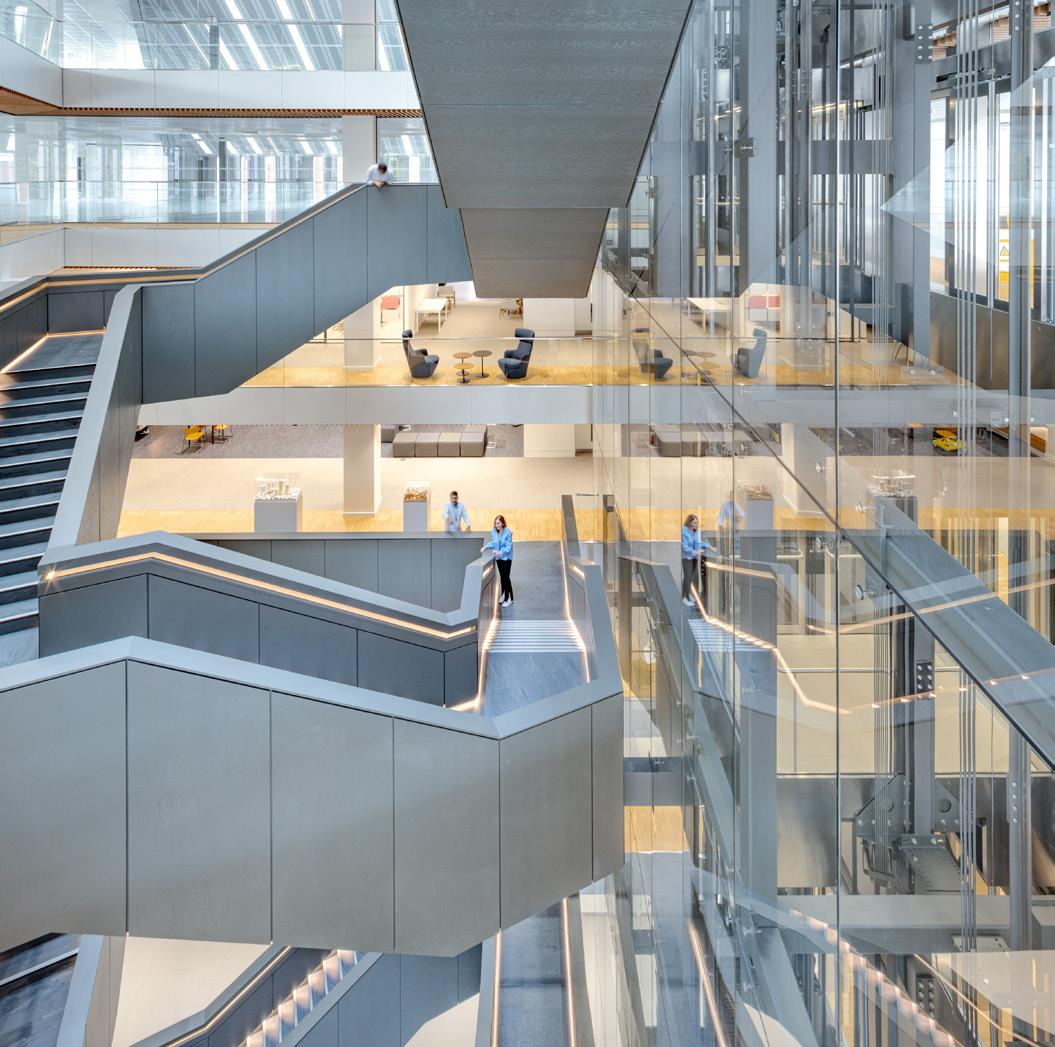
Sidara Annual Report 2023 5
HQ 150
Sidara
Holborn London, United Kingdom (Photo credit: Perkins&Will)
About Sidara
Delivery Together, Globally
Some of the most recognizable names in the industry are proud members of Sidara, where we draw on the resources and expertise of the entire network. Together, we partner with clients on diverse and ambitious projects around the world. Sidara is made up of leading, privately-owned specialist services firms with a diverse history and global presence. Our world-class planning, design, engineering, and project management firms are dedicated to achieving our clients’ ambitions and supporting sustainable communities worldwide.




Sidara Annual Report 2023 6
1956 1986 1989 2007 2012 2014 2017 2022 2023 1986 1990 2009 2013 2016 2021 2022 2023
Regions & Markets We Serve Financial Performance
Driven by strong performance in North America (45.9% of Revenue by Region), the Middle East (25.9%), and Asia Pacific (APAC) (11.0%), Sidara continued to grow gross revenue in 2022. Our success was driven by both organic growth and targeted strategic acquisitions. We continue to be strong in buildings (50.2% of Revenue by Market) and transportation (34.2%), working for clients in these markets across all regions.
Sidara Annual Report 2023 7
$2.47 Revenue (USD Billion) $2.44 $2.46 $2.25 $2.37 $2.58 2017 2018 2019 2020 2021 2022 $2.0 $2.1 $2.2 $2.3 $2.4 $2.5 $2.6
Revenue by Region (USD)
Revenue by Market (USD) North America 45.9% Middle East 25.9% APAC 11.0% Africa 8.1% Europe 8.1% LATAM 1.0% Buildings 50.2% Transportation 34.2% Industrial Process 4.4% Petroleum Infrastructure 2.8% Sewage & Solid Waste 2.3% Power 2.1% Water Supply 1.8% Telecommunications 1.7% Manufacturing 0.5% Hazardous Waste <0.1%
2022
2022
Sidara Annual Report 2023 8 Top 225 Design Firms Working Abroad Top 150 Global Design Firms Top 10 By Region Top 10 By Market 10th Sidara Overall Ranking 23rd Sidara Overall Ranking 3rd Middle East (1st Pure Design Firm Ranking*) 2nd Buildings (2nd Pure Design Firm Ranking*) 5th Pure Design Firm Ranking* 10th Pure Design Firm Ranking* 3th Africa (2nd Pure Design Firm Ranking*) 7th Sidara Overall Ranking 6th USA (4th Pure Design Firm Ranking*) 2021 1st Aviation 1st Healthcare *Pure design firms are firms which do only design and no contracting Regions
We
2022 ENR Rankings
& Markets
Serve
Note from Sustainability Council Chair
Our ESG Journey & Approach
Goals & Performance
Footprint vs. Handprint
Our Commitments

Douglas International Airport
Carolina,
Landrum
Perkins&Will
TYLin
Charlotte
Charlotte, North
USA -
& Brown /
/
ESG at a Glance
Note from our Sustainability Council Chair

The world is undergoing the largest wave of urban growth in human history. Therefore, we must urgently incorporate decarbonization and sustainable practices into the space and infrastructure to accommodate the estimated five billion people who will inhabit those cities by 2030.
Recognizing that the built environment is responsible for producing nearly 40% of all global greenhouse gas (GHG) emissions each year presents us with a unique opportunity to innovate and introduce holistic lifecycle carbon planning and sustainable solutions that will bend the carbon curve and enable growth to proceed in a way that works for both people and the planet (WBCSD 2018).
1. Support the identification and sharing of best practices across all Sidara companies.
2. Assist companies in operating new and existing buildings (within their direct control) that are net-zero whole life carbon by 2030.
3. Promote a low embodied carbon approach and net-zero carbon pathways in the work we deliver to clients.
4. Advance internal ESG efforts and build a culture of sustainability and stewardship across Sidara.
5. Collaborate with industry partners to advance thought leadership on sustainable infrastructure and policy.
our presence and impact at COP27, and the expansion of sustainable projects within our existing portfolio.
Looking ahead, we aim to expand awareness and engagement across our companies, drawing on impact networks, a living systems worldview, and greater integration with natural ecosystems. We are also refining our approach to data management, emphasizing the collection of quality data, and strive to formalize the ESG expectations across Sidara.
Our commitment to ESG principles galvanizes the collective power of our people, inspires the communities we work with, and enables thriving built environments and ecological systems to regenerate rather than deplete.
Balsam Nehme Chair of Sidara Sustainability Council & Head of Sustainability - Dar
The people and companies that make up Sidara share an exceptional vision for driving sustainability in all that we do. Through mechanisms such as our Sustainability Council and various global commitments, we have begun our formal ESG journey towards driving long-term change and the decarbonization of the built environment.
As the current Chair of Sidara’s Sustainability Council and a long-standing advocate and technical specialist for sustainable building practices, I am proud to lead a group that drives our vision forward on a practical, day-by-day basis. By bringing together sustainability experts and leads from across all our companies, the Council strives to achieve five main goals:
If 2021 marked the start of our formal ESG reporting journey, 2022 was the year we established a baseline of our performance against indicators within the nine Global Reporting Initiative topics outlined in this report. Under the leadership of the Council, and guided by Sidara’s Executive Committee, we seek to establish a common framework for our ESG commitment across all our companies, which has been led by Introba and validated by PricewaterhouseCoopers (PwC), as well as a common set of priority reporting topics for upcoming disclosures.
Reflecting on all the work we did in 2022, I am exceptionally inspired by our signatory onto the World Green Building Council Net Zero Commitment and subsequent research and advocacy in the“Beyond Buildings” report,
As one of the world’s largest privately-owned architecture, engineering, and consulting groups, we see ourselves playing a critical leadership role in fostering a sustainable future for all of humanity. Our commitment to ESG principles galvanizes the collective power of our people, inspires the communities we work with, and enables thriving built environments and ecological systems to regenerate rather than deplete.
Strengthened by the diversity and expertise of our brands, we continue to strive for positive outcomes at scale. By combining the technical expertise, geographic presence, and unique culture of each company, we promise to deliver equitable sustainability solutions that focus on increasing resilience, resource efficiency, circularity, biodiversity, and whole lifecycle carbon to every client and project.
Note from Council Chair
Sidara Annual Report 2023 10
Our ESG Journey & Approach
Rooted in a Regenerative Process
The Purpose of our ESG Program is...
– to galvanize the power of our people...
– in such a way that we catalyze, lead, and inspire within the communities where we work...
– to enable the thriving of ecological systems.
Our Process
To build a strong foundation upon which this program can develop and evolve, our work is based on the following premises:
A. This is a capability-building process. Our program needs to evolve over time. Its ongoing viability relies on a shared commitment to learn through this process and co-create our approach.
B. Data is essential. The processes and systems to embed these outcomes will be supported with data collection to measure progress. This ensures that the program allows our business, our customers, and the communities we serve to thrive.
C. Third-party advice and review. In our inaugural year, we engaged a third-party consultant to provide a critical review of the program and advise on risks and gaps in preparation for official assurance next year.
Our Design
Working with the unique potential of Sidara, a collaborative of organizations whose exceptional expertise and diverse resources span all aspects of the built and natural environment, we seek to evolve our role from building on the environment to working with it. Specifically, we seek to play a key role in accelerating the transition to a lowcarbon future in which life is thriving.
Using ESG work as an instrument to realize that potential, our focus on Decarbonization and Gender Empowerment arises from the insight that these are nodal points of intersection for our industry, and ones which we can influence directly. Movement here will have impacts that ripple out to create other benefits to the larger social, economic and environmental systems in which our projects are located. This approach roots our program in regenerative practices by embracing a living systems mindset. The core principle we will use to guide the work is the stewardship of our Home.
ESG Impact Networks
Through the conscious creation of ESG Impact Networks, we can accelerate change within the organization. Our approach is inspired by the Impact Network concept from David Ehrlichman.

Our ESG Journey & Approach
Sidara Annual Report 2023 11
Our ESG Journey & Approach
ESG Reporting Structures
Reporting Brands
All brands within Sidara are represented within the 2023 Collaborative Annual Report for financial performance in the 2022 fiscal year.
As this is our inaugural year for ESG reporting, focus was placed on the leading brands to establish proper ESG Governance and programmatic structures.
The following brands were included in the ESG reporting for the 2022 fiscal year, and the graphic featured represents a static version of a dynamic evolution that continues to take place among our collaborative of brands:
– Dar Al Handasah (referred to as Dar; specialty brands excluded in 2022)
– Perkins&Will (specialty brands included in 2022)
– Currie & Brown
– Penspen
– TYLin (specialty brands excluded in 2022)
– Introba
– Landrum & Brown (referred to as L&B)
See the appendix for full company write-ups and specialty brands that joined Sidara in late 2022 and 2023, which were excluded from 2022 ESG performance reporting.
Internally Operating via Pillars
Sidara operates through five verticals, referred to internally as Pillars. Each Pillar includes a leading brand(s), as well as subsidiary or affiliate organizations, which we call our ‘specialty brands.’ To align with operations, this is collected through a Pillar approach. Each brand provides ESG data that is then rolled up and presented by Pillar and/or by region (where appropriate). ESG-focused initiatives (footprint stories) and project examples (handprint projects) will be highlighted in this report by brand. Pillars
Our Leading Brands


Specialty Brands




Our ESG Journey & Approach
Sidara Annual Report 2023 12
Project
Global
Dar Architecture
Management Energy
Infrastructure
Our ESG Journey & Approach
Methods, Frameworks, and Assessments
Methodology
The ESG program has been developed with guidance from our internal Introba team, including leaders and consultants from their Australian & U.S. ESG advisory services teams. Introba’s remit was to take all brands within Sidara on this Journey, including collecting the data, facilitating stakeholder engagements and target setting workshops, as well as production of this report. The decision to leverage consultancy resources within was based on having the skills in our business and the knowledge of how to do this for large, complex and multi-regional organizations. Details regarding our ESG methodologies can be found within the appendix.
This report has been reviewed by a third party (PwC) for feedback and verification readiness. The review was conducted to validate our methodology, data collection quality, and governance process.
Global Reporting Initiative
The Global Reporting Initiative (GRI) was selected as appropriate on the basis that it is an internationally recognized framework which aligns with our global reach as a collaborative of companies. Additionally, GRI is the most holistic framework available; it allows us the flexibility to prioritize and select areas of focus within U.S., and it is compatible with other frameworks we are already using in various parts of Sidara, such as the WorldGBC’s Net Zero Carbon Buildings (NZCB) Commitment. GRI leaves us room to mature our ESG program over time, as best suited for our group of companies.
We are targeting to submit for GRI reporting in 2024 based on the 2023 fiscal year. We will continue to track the fast-changing regulations and standards, with a plan to adjust our reporting program as necessary to meet market demand.
Risk & Materiality Assessments
For the inaugural year of ESG reporting, our risk and materiality assessments were conducted in a series of workshops with our champions using the GRI’s complete list of topics as a structure. See appendix for more details on our initial materiality assessment results.
We intend to revisit the materiality assessment approximately every two to three years. In future years, we will require input from a larger group of stakeholders, and include a double-materiality assessment, in addition to expanding our use of metrics beyond the GRI framework.
Target Setting
For target setting, we leveraged an outcomesbased approach, beginning with the collection of baseline performance data. With the results of the baseline data in mind, we identified a set of “Desired Outcomes” which will become our long-term goals (2040, 2050). Performance will be measured against short-medium term goals (2025, 2030) to evaluate our progress and hold us accountable along the way.
GRI metrics for initial disclosure:
GRI 201 Economic Performance
GRI 205 Anti-Corruption
GRI 302 Energy
GRI 305 Emissions
GRI 405 Diversity and Inclusion
GRI 413 Local Communities
GRI 401 Employment
GRI 403 OH&S
GRI 404 Training and Education
Our ESG Journey & Approach
Sidara Annual Report 2023 13
Goals & Performance
Our Desired Outcomes
Sidara is committed to ...
Energy/Emissions DEI & Remuneration Health, Safety & Well-Being Employee Retention & Development
Footprint: Our operations ... achieving net zero carbon operations for Scope 1 (direct) and Scope 2 (indirect) emissions by 2030.
... fostering inclusion in the workplace that is diverse, inclusive, and provides equitable opportunities for all. We strive to nurture a culture of respect and a sense of belonging across our companies globally.
... becoming one of the best places to work, placing utmost importance on the health and wellness of our employees. In aspects of the business where Occupational Health & Safety (OH&S) is relevant, striving towards zero safety incidents.
... providing employees with access to learning resources and clear career paths for professional and personal development.
Governance & Operations Commitments
... prioritizing accountability and integrity throughout our operational practices. We commit to actively promote gender diversity within governing bodies, manage risk and compliance, and foster a culture of transparency.
... all companies within Sidara meeting the WorldGBC’s 2030 Net Zero Carbon Buildings Commitment, as well as signing onto the Women’s Empowerment Principles (WEPs) by the UN Global Compact and UN Women, to advance gender equality and women’s empowerment in the workplace, marketplace, and community.
Handprint: Through our projects
... aligning our service offerings around decarbonization and acknowledging that the projects we touch have a far greater impact than our footprint alone. Therefore, we prioritize ecology, energy conservation, equity, emissions reduction, circularity, and resilience.
... aligning around an aspirational target of gender equality within governance bodies, we acknowledge that this requires actively building a diverse pipeline of talent for the future.
... designing projects that not only minimize environmental impact but also create a significant positive influence on the health and well-being of communities served.
... actively supporting educational organizations and community outreach focused on the development of a decarbonized world.
... ensuring our ethical practices underscore strong economic performance, driving our responsible approach to growth and business interactions.
... focusing on the nodal intervention of decarbonization and gender equity, we strive to accelerate positive environmental and social outcomes in our industry.
Sidara Annual Report 2023 14
Performance
Goals &
Goals & Performance
Sidara’s 2022 ESG Performance
Collectively, our brands are well on their way to meet our 2025 targets.
Sidara’s ESG program has set clear baseline performance expectations (“good”) and a roadmap for raising the bar over time. The program has been designed to be agile enough to address the complexity and varied nature of the collaborative.
Each company can exhibit leadership (“better” or “best”) depending on where they are on their journey. Lessons learned through each company’s experiences can then be further utilized to support the advancement of others.
Our roadmap (in the appendix) includes targets for improving our operational footprint, informed by baseline data collection, industry research, and in co-creation with key internal stakeholders. The roadmap is supported by a performance dashboard integrated into our Sidara ESG Data Portal. Performance is evaluated against the next upcoming target (current target is 2025), with requirements ratcheting up in correspondence with future targets (2030 target will form the basis for evaluation in 2026, 2040 for 2031, etc.).
The creation of ESG Implementation Plans are scheduled for next year (2024), which will detail the actions needed to realize desired outcomes and identify all responsible parties.
Good (Baseline)
Better (Recommended)
Best (Leadership)
Sidara 2022 Performance
Social
ESG Dimensions
E1 Energy (EUI)
E2 Energy (GHG)
E3 Refrigerants (GHG)
E4 Water Consumption
E5 Operational Waste Generation (GHG)
E6 Business Travel (GHG)
E7 Employee Commute (GHG)
E8 Supply Chain (GHG)
S1 Employee Diversity
S2 Remuneration
S3 Turnover
S4 Health, Safety & Well-Being
S5 Training & Education
S6 Local Communities
G1 Diversity of Governing Bodies
G2 Policies & Procedures
G3 Governance Structures
G4 Financial Disclosures
G5 Commitments
G6 Risks, Ethics & Compliance 2025 Target
Sidara Annual Report 2023 15
E1 E2 E3 E4 E5 E6 E7 E8 S1 S2 S3 S4 S5 S6 G1 G2 G3 G4 G5 G6
Governance Environmental
E S
Full Partial Goals & Performance
G
Footprint vs. Handprint
Operational Footprint vs. Influential Handprint
As a collaborative of businesses focused on design services within the architecture, engineering, and construction (AEC) industry, we recognize that our greatest opportunity to have a positive impact on the planet and in our communities is through the projects we touch. Therefore, our approach to annual ESG reporting integrates the performance of our operational footprint with our influential handprint.
Throughout this report, we refer to examples of footprint stories and showcase our handprint projects.
Our ESG program uses an “outcomes-based approach” structure. This identifies a desired end state, outlines how each desired outcome can be measured, and establishes a set of targets on a timeline against which our performance can be evaluated .
The desired outcomes serve as our long-term goals which we strive actively together to reach, while remaining aware of their inherent challenges and potential barriers that may be outside of our control. We have also set shortand mid-term targets to guide us along the way, contributing to a clear and aligned roadmap for all brands within the collaborative to follow.
“Footprints are the environmental and social impacts of the processes that sustain us. (These processes sustain us by directly or indirectly supplying every good and service we buy or experience.)”
“Handprints
are changes to environmental and social impacts that we cause outside of our footprints.”
“Footprints and Handprints: The Ripple Effects of Our Presence” - Living Future Institute, TrimTab, Issue 35 by Greg Norris, Oct 11, 2018
Footprint Stories Handprint Projects

Learn more about how student mentorship at Third Quadrant Design (TQD) dives into solving challenges around embodied carbon.
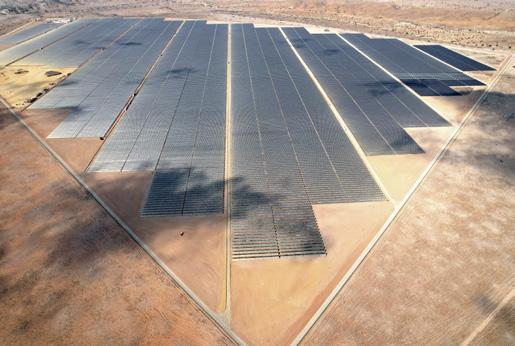
Learn more about Angola’s most recent utilityscale photovoltaic plants.
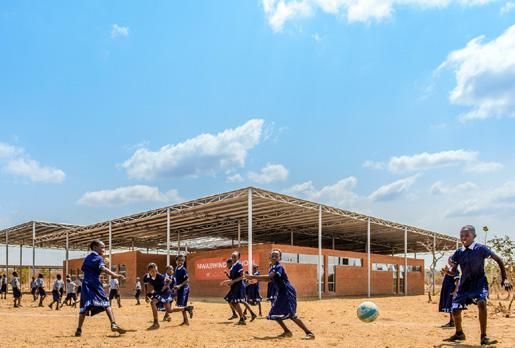
Learn more about how Silman’s Building Equity Initiative (BEI) addresses social inequality and creates spaces that strengthen communities.

Learn more about the world’s largest LEED BD+C v4 NC Platinum-certified project: Google Bay View.
Footprint vs. Handprint
Sidara Annual Report 2023 16
Footprint vs. Handprint Sample Global Impacts of Our Work


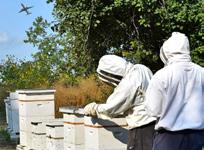





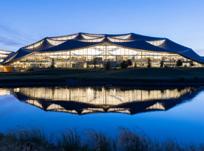


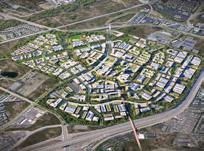
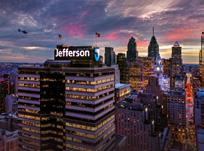




Sidara Annual Report 2023 17
Google Bay View Thomas Jefferson Health Destination Crenshaw Magdi Yacoub Global Heart Center UC Berkeley Chou Hall Biópio and Baia Farta Photovoltaic Plants The Point Lululemon Store Support Center LED Lights in Edinburgh O’Hare International Apiary 150 Holborn Third Space Commons EET Hydrogen’s Low Carbon Hydrogen Plant Princeton University Residences Centralny Port Komunikacyjny KSA Pavilion – Dubai Expo AUB Mediterraneo Campus Denotes Sidara Office Locations Footprint vs. Handprint
Our Commitments
Sample Global Impacts of Our Work
Net Zero Carbon Buildings Commitment
“The World Green Building Council’s (WorldGBC) Net Zero Carbon Buildings Commitment is developed to recognise and promote advanced climate leadership action from businesses, organizations, cities and subnational governments in decarbonizing the built environment, to inspire others to take similar action and remove barriers to implementation.”
With endorsement from the Sidara CEO, Talal Shair, all Sidara’s leading companies will sign up to the WorldGBC Commitment. Those that have joined as signatories are:
– Dar (assets reported under Sidara)
– Perkins&Will
– Currie & Brown
– TYLin Group (includes TYLin, Introba, L&B)
(More details on Sidara’s Carbon commitment)
Women Empowerment Principles (WEP)
“The Women’s Empowerment Principles (WEPs) are a set of Principles offering guidance to business on how to advance gender equality and women’s empowerment in the workplace, marketplace and community. Established by UN Women and UN Global Compact, the WEPs are informed by international labor and human rights standards and grounded in the recognition that businesses have a stake in, and a responsibility for, gender equality and women’s empowerment. WEPs are a primary vehicle for corporate delivery on gender equality dimensions of the 2030 agenda and United Nations Sustainable Development Goals (UN SDGs).”
By joining the WEPs community, the Sidara CEO signals commitment at the highest levels of the organization to work collaboratively in multi-stakeholder networks to foster business practices that empower women.
UN Global Compact + Sustainable Development Goals (SDGs)
“The United Nations (UN) Global Compact is a voluntary initiative based on CEO commitments to implement universal sustainability principles and to take steps to support UN goals. The world’s largest corporate sustainability initiative, the UN Global Compact is a call to companies to align strategies and operations with universal principles on human rights, labor, environment and anti-corruption, and take actions that advance societal goals. The multi-year strategy of the UN Global Compact is to drive business awareness and action in support of achieving the Sustainable Development Goals (SDGs) by 2030. The SDGs provide a powerful aspiration for improving our world — laying out where we collectively need to go and how to get there.”
As a signatory of the UN Global Compact, we are committed to mapping our ESG actions to the UN SDGs, as outlined on the following page.
C40 Cities
Our Commitments
C40 is a global network of nearly 100 mayors of the world’s leading cities that are united in action to confront the climate crisis. Mayors of C40 cities are committed to using an inclusive, science-based and collaborative approach to cut their fair share of emissions in half by 2030, help the world limit global heating to 1.5°C, and build healthy, equitable and resilient communities.
At the United Nations’ Climate Change Conference 2022 (COP 27), Dar presented a research-backed action plan that countries in the Middle East and North Africa (MENA) can follow to decarbonize three key sectors — the built environment, transportation, and water and energy resources — to achieve net zero ambitions. Learn more here.
Sidara Annual Report 2023 18
Our Commitments
United Nations Sustainable Development Goals (UN SDGs)
We’ve mapped our own operations (including services and footprint stories), as well as projects from across Sidara which are featured within this report against the UN Sustainable Development Goals (SDGs):
Dar Architecture (Perkins&Will)
Project Management (Currie & Brown)
Energy (Penspen)
Global Infrastructure (TYLin Group)
KSA Pavilion – Dubai Expo 2020
LED Streetlights in Edinburgh
Biópio and Baia Farta Photovoltaic Plants
EET’s 1GW Low Carbon Hydrogen Hub
Google Bay View
Chicago O’Hare International Airport Apiary
Centralny Port Komunikacyjny
Destination Crenshaw
AUB – Mediterraneo Campus
Princeton University Residences
UC Berkeley Chou Hall
150 Holborn
Thomas Jefferson University Health
Magdi Yacoub Global Heart Center
Lululemon Store Support Center
The Point, Utah – Smart Mobility Study
Third Space Commons

















Sidara Annual Report 2023 19
Footprint Operations Handprint Projects Our Commitments
Our Planet
Introduction to Our Environmental Impact
Our Zero Carbon Commitment
Energy & Emissions
Water Stewardship
Biodiversity Research & Advocacy

Formosa 4 Offshore Windfarm | Taiwan - TYLin / Synera Renewable Energy
Introduction to Our Environmental Impact
Environmental Impact
Desired Outcomes
Sidara is committed to achieving net zero carbon operations for Scope 1 (direct) and Scope 2 (indirect) emissions by 2030.
Here, we demonstrate our collective environmental impact through 2022 performance metrics, highlighting both stories (footprint) and beacon projects (handprint).
For this year’s report, we are presenting our performance and corresponding stories through the following sub-sections:
– Energy & Emissions
– Water Stewardship
– Biodiversity
In future years, we will expand the ESG program to report on the following environmental dimensions:
Environmental Dimensions
We align our service offerings around decarbonization and acknowledge that the projects we touch have a far greater impact than our footprint alone. Therefore, we holistically prioritize ecology, equity, circularity, and resilience.
E1 Energy (EUI)
E2 Energy (GHG)
E3 Refrigerants (GHG)
E4 Water Consumption
E5 Operational Waste Generation (GHG)
E6 Business Travel (GHG)
E7 Employee Commute (GHG)
E8 Supply Chain (GHG)

Sidara Annual Report 2023 21
Niagara Falls State Park Transformation Initiative | Niagara Falls, New York, USA - TYLin
Our Zero Carbon Commitment
In line with the World Green Building Council (WGBC) Net Zero Carbon Buildings Commitment (the Commitment), we diligently monitor and evaluate greenhouse gas emissions (GHG) stemming from the buildings associated with our operational activities. In our 2022 data collection process, we meticulously gathered Scope 1 (direct) and Scope 2 (indirect) energy-related emissions data, categorized by office location (rolled up to the region) and operating company (rolled up to the Pillar).
For this inaugural year of reporting, we focused on the energy-related Scope 1 and 2 emissions. Some operating companies with more experience in greenhouse-gas-emissions reporting included additional environmental metrics, including water consumption and Scope 1 fleet vehicle emissions. We are working to expand our collective reporting with aligned methodologies to include metrics on Scope 1 fleet vehicle and refrigerant (fugitive) emissions, water consumption, biodiversity impacts, and Scope 3 supply chain emissions.
More details about the WGBC Net Zero Carbon Buildings Commitments by brand can be found in the appendix
Commit > Disclose > Act > Verify > Advocate
The Commitment requires deep collaboration across the entire value chain, and radical transformation in the way buildings are designed, built, occupied, and deconstructed. The Commitment considers the whole lifecycle impact of buildings and builds on WorldGBC’s Whole Life Carbon Vision and best practice principles for implementation.
Learn more about: The Commitment - World Green Building Council (worldgbc.org)

We’ve been tracking our operational emissions for the last decade and continue to make strides in carbon reduction. The Commitment helps hold us accountable to this goal. For example, our recently enhanced decarbonization policy requires that, with every new office lease we sign, our places of business run on 100% electric energy, reducing dependence on fossil fuel energy sources. We aspire to be the change the building sector needs.
Kathy Wardle Perkins&Will Principal & Regional Director of Regenerative Design | Canada
Sidara’s Commitment
1 Commit Commit to operating all new and existing buildings within organizations’ direct control at net zero carbon, achieving maximum reductions of embodied carbon, and compensating any residual emissions in new developments and major renovations by 2030. Support all companies within Sidara to achieve the same.
2 Disclose Annually measure, assess, and disclose the Sidara portfolio’s energy consumption and carbon emissions, to include Scope 1 and 2. For any newly built asset or major renovation, Sidara will complete whole lifecycle analysis for embodied carbon reduction.
3 Act Implement a decarbonization roadmap that outlines a reductionfirst approach, improving energy efficiency and securing renewable energy. Maximise the reduction of embodied carbon for any new developments or major renovations, compensating for all residual upfront embodied carbon emissions. Support Sidara in implementing energy conservation measures, procuring renewable energy and offsets, and procuring low-carbon materials for new assets or major refurbishments under direct operational and financial control.
4 Verify Undertake independent third-party verification of energy performance and associated carbon emissions for assets and portfolios under direct financial and operational control. For the whole lifecycle, verify embodied carbon reduction to market baseline requirements upon building a new asset for own use or undertaking any major refurbishment to existing assets under direct control.
5 Advocate Advocate in client engagements by promoting a low-embodied carbon approach and net zero carbon pathways; internally through efforts like Sidara’s Sustainability Council, and with industry partners by advancing thought leadership on sustainable infrastructure.
Sidara Annual Report 2023 22
Energy & Emissions
2022 Performance
2022 Environmental Performance
– Building Energy Use Intensity (EUI) and Greenhouse Gas (GHG) Emissions
We are aligning our data collection around GRI 302 Energy (EUI) and 305 Emissions. For 2022, the Scope 1 and 2 energy consumption (EUI) and associated GHG emissions for all companies within Sidara performed better than benchmarked data. The energy-related GHG emissions performance compared to benchmarked data can be found in the table to right.
The results of our baseline year data collection led us to recognize an opportunity to consolidate our real estate holdings in certain regions to better align with the hybrid work model and make optimal use of underutilized office spaces. Additionally, we are actively engaged in ongoing lease negotiations with our landlords to phase out gas, install onsite renewables, and retrofit existing spaces with energy-efficient technologies. Different regions also presented their own unique challenges for data collection. Looking ahead, we aspire to enhance our data collection processes to ensure more accurate and comprehensive performance data in the future.
Sidara Annual Report 2023 23
Operating Pillar Total Energy-Related (Scope 1 & 2) Greenhouse Gas Emissions (MTCO2e) % better than benchmark Benchmark* Performance Dar 24,471,336 14,436,125 41.01% Architecture 3,850,483 3,682,986 4.35% Project Management 3,236,206 3,069,718 5.14% Energy 1,132,096 709,237 37.35% Global Infrastructure 5,080,277 4,542,584 10.58% Sidara (Total) 37,770,398 26,440,650 30.00%
Benchmarking
on following pages Size of circle denotes size of office (SF) Energy Use Intensity – EUI (kbtu/SF) =
per Person (kgCO2e/capita) by Pillar
– EUI (kbtu/SF) of
Energy GHG Emissions per Person (kgCO2e/capita) by Region Dar Africa APAC Europe LATAM Middle East North America Architecture Project Mangement Energy Global Infrastructure 2,000 3,500 500 1,500 2,000 2,500 3,000 1,000 1,600 1,200 800 400 0 0 Average 1,652 Average 1,652
* See
methodology
2022 Performance - Energy GHG Emissions
Energy Use Intensity
Global Office Portfolio 2022 Performance -
Energy & Emissions
2022 Performance
Barriers to Overcome
One of our main challenges is obtaining actual utility data for our leased assets. With 238 offices (sites) operating in 2022, in 60 countries around the world, over 96% of those offices are in leased spaces. In many of these leased spaces, utilities are often bundled within the overall rent, and in many of those cases the spaces are not submetered and/ or landlords do not provide whole building energy use data.
Per standard GHG protocols, we could defer such emissions to Scope 3 as it falls outside of our direct control. However, in anticipation of evolving technology, including the increased use of sub-meters by landlords and potential for new lease agreements, we are choosing to maintain all energy-related emissions of our operations within our Scope 1 and 2 reporting. This decision makes us better positioned to anticipate future emissions and plan strategically around decarbonization.
Introduction to our Benchmarking Solution
To address this challenge, we devised a data collection methodology which uses a “good/ better/best” framework to delineate the relative accuracy of data sets.
Our goal is to achieve “Best” data quality for all data points, but we understand that this process will take time, and will be critical when renegotiating lease agreements.
– Good = Benchmarking data leveraged where utility data is not available (traditionally Scope 3)
– Better = Whole building metered data or utility bills which are prorated by leasable area (traditionally Scope 3)
– Best = Actual energy usage from sub-metered readings or utility bills specific to leased/ owned space (Scope 1 and/or 2)
With over 92% of the offices (86% by area) that do not pay utility bills directly (outside of direct control), these offices are reported using EUI centered on benchmarking data (see benchmarking methodology) and measured against the typical performance of commercial offices in their specific regions.
We recognize that employing benchmarking data introduces a margin of error, and we are actively pursuing strategies to secure access to more accurate data in the future. One strategic approach involves including a request for submetered data and utility bills for occupied floors as part of lease negotiations, both for existing and new offices.
Embracing this approach not only grants us access to a greater volume of data but also enhances its quality. This is evidenced by instances where we have access to performance data, resulting in superior performance compared to benchmarked data as can be seen from the figure on the right.
Overall, in the 2022 Baseline year, Sidara’s total energy consumption (kBtu) was 15.8% lower than benchmarked buildings, and the total GHG emissions for Scope 1 and Scope 2 were 30.00% lower than the benchmark.
We are recognizing the largest differences between benchmark and performance are those companies that have significant operations within the Middle East and Africa (Pillars: Dar, Energy). Our offices operating in Africa have an average EUI of 40 kBTU/SF compared to a typical office in the continent at 87 kBTU/SF. Within the Middle East, offices are fuel switching due to unreliable electric grids, where running on diesel generators are less carbon intensive than the electrical grids.
Total Building Energy GHG Emissions (MTCO2e) - Comparison of Benchmarked vs. 2022 Performance by Pillar
Percent better than benchmark (where “benchmark” refers to typical performance of commercial offices within the same region)
2022 Performance
Sidara Annual Report 2023 24
25,000 20,000 15,000 10,000 5,000 0 Dar Architecture Project Mangement Energy Global Infrastructure 41% 4% 5% 37% 10%
Benchmark
30% Sidara
Energy & Emissions
Innovative Benchmarking Methodology
Benchmarking Methodology
The need for building energy performance benchmarks in over 170 cities with Sidara offices has led to the development of a novel benchmarking methodology. This methodology aims to provide location-specific energy use intensity benchmarks while accounting for uncertainty in baseline parameters. It also offers a streamlined, scalable, and dynamic process that measures progress over time.
We have addressed this need by combining traditional energy modeling with machine learning techniques. This automated approach accelerates the creation of building energy models, enabling rapid evaluation of various design options. It not only establishes benchmarks in any country and city around the world, but also identifies high-priority carbon reduction strategies, offering a roadmap for future decarbonization.
Traditionally, determining design performance benchmarks has been time-consuming and reliant on manual trial and error. However, our approach employs statistical surrogate models, a type of machine learning algorithm, to expedite the process by simulating thousands of EnergyPlusTM models intelligently. This method combines mechanistic and statistical
models to provide scientifically-grounded targets and accommodate variations across a range of unknown factors.
effective decision-making frameworks that provide directionally accurate roadmaps toward designing and retrofitting low-carbon buildings.
The strength of our approach is in its ability to bring together building science and data science, or mechanistic models and machine learning (Design and Analytics). Our fully automated workflow rapidly, systematically, and intelligently completes end-use characterization, sensitivity analysis, parametric exploration, and multi-objective optimization to develop Probabilistic results are conveyed as distributions given uncertainties in underlying model inputs.
Benchmark Design Packages
Good Better Best
Once a benchmarked energy use intensity (EUI) has been established for a typical office building within any given city or country, we combine these factors with local grid emission data to translate EUI into energy-related greenhouse gas emissions (Scope 1 and Scope 2). All these factors have been integrated into our new ESG Data Portal tool.
Benchmark
*10% better than pervious year’s benchmark
Target
Specific target set by WWRE-S
All designs that meet the threshold

Sidara Annual Report 2023 25
Energy & Emissions
Handprint Project: Kingdom of Saudi Arabia Pavilion – Expo 2020 Dubai
A complex challenge in high-performance design
Creating a sustainable and iconic “window-to-the-world”
Inspired by the theme “the sky is the limit,” the Kingdom of Saudi Arabia’s iconic Pavilion soars in a symbolic, inspiring, and unique inclined prism design that draws on the Kingdom’s welcoming character and its rich history, with a nod to the Expo 2020 theme of “Connecting Minds, Creating the Future.” The design was envisioned to faithfully represent the Kingdom’s identity and tradition of hospitality, while taking millions of guests on an immersive journey to explore the country’s rich heritage, age-old traditions, vibrant culture, and natural wonders.
From the earliest stages of planning, the Pavilion was intended to meet highly ambitious sustainability and energy efficiency objectives. This commitment was inspired by the core values of the Kingdom’s Vision 2030 — sustainability, technology, and innovation — and by the high standard of sustainability set for Expo 2020 — which aimed to set a blueprint for sustainability and be one of the most sustainable Expos ever by ingraining sustainability in everything from the pavilions themselves and the construction process to the post-Expo legacy.
Dar’s detailed design for the LEED Platinum Pavilion incorporated everything from renewable energy and state-of-the-art energy efficiency features to water recycling schemes and construction materials with low-embodied carbon.

Saudi
Delivering results and inspiring business leaders, the Pavilion showcases how sensitive and ambitious design choices can create a complex and inspiring project with a highly impactful visitor experience. By prioritizing the highest standards of sustainability and energy and water efficiency, we were able to achieve a staggering 82% reduction in indoor water use, and used 650 photovoltaic panels to achieve a 24% annual energy savings.
Balsam Nehme Dar, Head of Sustainability, Lebanon
—


Sidara Annual Report 2023 26
Arabia Pavilion, Expo 2020, Dubai, United Arab Emirates
Dar
Energy & Emissions
Handprint Project: LED Streetlights in Edinburgh
Currie & Brown Wins “Energy Project of the Year - Public”
A greener, more welcoming city for future generations
As part of one of its public service outreach events, Currie & Brown employees in Scotland partnered with team members at their client Amey to help upgrade more than 55,000 streetlights in Edinburgh to high-efficiency LED bulbs.
The project is predicted to save the City of Edinburgh Council around £54 million over a 20year period. It has already reduced total street lighting energy consumption by approximately 60%, while reducing CO2 emissions by 75% in the same period.
This contributed to the shared goal of the City of Edinburgh and Currie & Brown to create a carbon net zero city. This project was awarded the “Energy Project of the Year – Public“ at the 2022 Energy Awards.
In addition to the financial and environmental advantages of the project, communities across the Scottish capital have seen the benefits of this initiative. For example, upgrades to the lighting systems in the Colinton and Trinity Tunnels have allowed residents and visitors greater visibility and access.

Edinburgh, United Kingdom — Currie & Brown
This project delivered what it set out to: reducing street lighting energy consumption by approximately 60% [compared to the baseline year] and has seen CO2 reduced by 75%. This translated to a cost reduction of £3.8m for the City Council by the end of March 2022. The project was also delivered under budget, with a strong safety record, and all amidst the backdrop of Brexit and a global pandemic. So winning this award was truly the icing on the cake.
Jack Keillor Currie & Brown, Project Manager and Associate Director

Sidara Annual Report 2023 27
Energy & Emissions
Handprint Project: Biópio and Baia Farta Photovoltaic Plants in Angola
One million solar panels for one million people
Revolutionizing Energy Access in Angola
On July 20, 2022, Angolan President João Lorenço inaugurated the first two utility-scale solar photovoltaic plants in Benguela province. A key enabler of Angola’s transition to renewable and clean energy, these transformational plants can collectively deliver up to 585 GWh of electric energy annually — saving over 214 million liters of diesel (which would have been required to generate this electric energy by diesel-powered plants) and consequently eliminating up to 723,000 tons of CO2 every year, reducing Angola’s greenhouse gas emissions and substantiating the country’s commitment to the Glasgow United Nations Climate Change Conference of November 2021.
The two plants are part of one of the largest public, renewable energy intervention programs in sub-Saharan Africa. The venture includes five other photovoltaic plants, which will deliver clean, sustainable energy to more than one million people in Angola.
Dar is providing consultancy services to facilitate the construction of these photovoltaic power plants, which will incorporate one million solar panels, designed to deliver 370 MW of clean, sustainable, and reliable energy.

Benguela, Angola — Dar
With one of Africa’s largest public renewable energy intervention programs, the Republic of Angola has taken a transformational and incredibly ambitious step in its energy transition towards cleaner and more sustainable energy. Dar is honored and privileged to be supporting the delivery of these seven photovoltaic plants which will save up to 723,000 tons of CO2 emissions every year, while providing reliable, sustainable energy for over a million people across Angola.
Hadi Akiki Dar, Director of Electrical and Telecommunication Engineering, Lebanon

Sidara Annual Report 2023 28
Energy & Emissions
Handprint Project: EET Hydrogen’s low carbon hydrogen production plant in the UK
Delivering a hydrogen economy in the UK’s industrial heartland.
Transforming the energy landscape to reach net zero
As part of the UK’s commitment to net-zero (GHG) emissions by 2050 and goal to generate 70% of its electricity from renewable sources by 2030, Penspen, Sidara’s global energy specialist, is engineering the natural gas pipeline and related infrastructure required for EET Hydrogen’s large-scale, low-carbon hydrogen production plant — one of the first-of-its-kind in the world. In addition to supplying low-carbon energy for the country’s industrial heartland, EET Hydrogen’s new production hub will create low-carbon hydrogen to supplement electricity generation for transportation and to be blended into gas for heating. By 2030, its impact in reducing emissions will be equivalent to taking 1.1 million cars off the road.
In its initial phases, the hub will produce 1.35GW of hydrogen capacity — more than enough to power a large UK city like Liverpool — and capture some 2.7 million tons of carbon per year. By 2030, EET Hydrogen expects to deliver nearly 4GW of low-carbon hydrogen — 40% of the UK Government’s target.
Successful demonstrations at Pilkington Glass and Unilever have already shown how the switch over from natural gas to hydrogen could workand over 40 organizations have now signed up
to decarbonize through HyNet, UK’s leading industrial decarbonization project, including energy-intensive and high-process emission industries like cement and chemicals, as well as food and beverage production.

Ellesmere Port, United Kingdom — Penspen
This project will enable the decarbonization of hard-to- reach sectors including the heating of homes, fuel for industry, and flexible power generation. It will also create up to 75,000 jobs and generate £17Bn for the region and £37Bn for the UK.
Darren Bartlett Penspen, Global Energy Transition Director, United Kingdom

Sidara Annual Report 2023 29
Water Stewardship
Although focus has been placed on decarbonization, we acknowledge that water stress is also becoming an issue in many places where we work globally, and we anticipate it to be an increasing point of climaterelated risk.
In 2022, some Pillar companies submitted data on water consumption, however, much like the barriers identified within energy and emissions reporting, since over 96% of our offices are leased assets, we do not have access to water utility bills or water meters for our operations. Therefore, we anticipate the need to rely on benchmarking until more data is made available by our landlords. We are currently working on a methodology to benchmark our water consumption for our global portfolio.
Water Stress
In preliminary climate-related risk assessments, we have been able to review countries which anticipate future water stress (ratio of total annual water withdrawals to total available annual renewable supply, accounting for upstream consumptive use).
The water stress heat map to the right is overlayed with the current locations of our global portfolio. Places in which we currently do business and need to anticipate water stress issues include but are not limited to:
– Australia
– China
– India
– Mexico
– Middle East
– North Africa
– South Africa
– United States
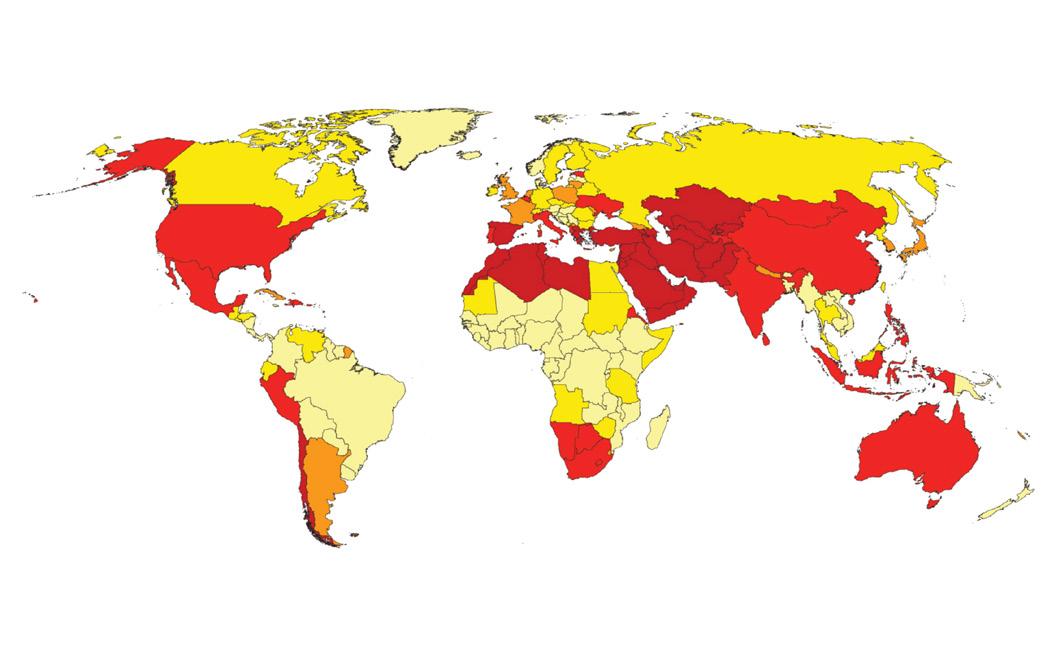
Low (<10%)
Low to medium (10-20%)
Medium to high (20-40%)
High (40-80%)
Extremely high (>80%)

Sidara Annual Report 2023 30
Greeley and Hansen, A TYLin Company, leads the project management of the DC Clean Rivers Project
Water Stress Map source: https://www.weforum.org/agenda/2019/10/water-inequality-developing-world-usa-west/
Water Stewardship
Handprint Project: Google Bay View in California
A “Net Positive Water” story in water-scarce California Designing the largest LEED BD+C v4 NC Platinum-certified project in the world
Google’s new Bay View campus, located adjacent to the NASA Ames Research Center, is built to the highest design and sustainability standards. Across the 42-acre site, there are 20 acres of open space, two office buildings, a 1,000-person event space, and 240 short-term employee accommodation units.
– Largest LEED BD+C v4 NC Platinum-certified project in the world and is expected to be the largest facility to attain the International Living Future Institute (ILFI) Living Building Challenge (LBC) Water Petal certification.
– 100% electric building in which even the kitchens are electric to decrease carbon emissions.
– Features a first-of-its-kind dragonscale solar roof across all three buildings, which uses the latest in building-integrated photovoltaic technology.
– Combined with power from nearby wind farms, Bay View will be one of Google’s first campuses expected to operate on 90% clean energy.
– Houses an innovative geothermal pile system to heat and cool the buildings, which is estimated to help reduce the water needed for cooling by about 90% compared with a traditional cooling tower system.
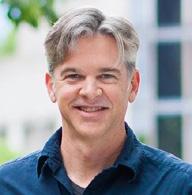
[This] has been a 10-year partnership — the largest, longestrunning project in our firm’s history. It epitomizes the growth we’ve experienced, not just in size but in capability, talent, and teamwork. As we like to say, the best ideas often come from the trades — and not just the engineers, but the pipefitters, sheet metal specialists, and those pulling wires.
Eric Solrain Introba, Sr. Principal, MEP Lead, USA
Mountain View, California, USA — Introba


Sidara Annual Report 2023 31
Photo Credit: Iwan Baan/Google
Biodiversity
Collectively, we are learning how best to align our operations in a way that supports the reversing of biodiversity loss, as well as creating a positive impact on the overall health and diversity of ecosystems. By leveraging our outcomes-based approach, the ESG impact network will dive into measurable actions in the coming years, including the exploration of Taskforce for Naturerelated Financial Disclosures (TNFD) reporting.
We also recognize that there is an even greater opportunity to create a positive impact on global biodiversity through the projects we touch. Teams throughout Sidara are ramping up their capabilities around ecology, environmental consulting, and nature-based solutions to address the climate crisis.
Our team of global sustainability consultants further recognize the direct connection between the climate crisis, preserving and restoring biodiversity, addressing water and food insecurity, preventing future global pandemics, and addressing equitable development.
Where We Do Business
By overlaying a map of where we do business around the world with a heat map indicating where biodiversity is most threatened, we observe a significant correlation. Regions which directly correspond with where we will want to focus our attention and efforts include but are not limited to:
– United States
– Europe
– Middle East and North Africa
– India
– Eastern Asia
– Central America
We will prioritize carbon offset projects which support ecosystem restoration and nature-based solutions in regions which are experiencing biodiversity loss.
Biodiversity Intactness Index (BII)
The biodiversity map (right) highlights biodiversity loss. The darkest areas indicate those with a BII of between 90-100%, where the area has “enough biodiversity to be a resilient and functioning ecosystem”. At the lightest end of the spectrum, the pale orange and yellow-shaded areas indicate a BII of less than 30%, which means that biodiversity has been “depleted and the ecosystem could be at risk of collapse”.


Sidara Annual Report 2023 32
TYLin employees volunteer at Groundwork Somerville South Street Community Farm | Boston, MA, USA
Source: https://www.weforum.org/agenda/2022/10/nature-loss-biodiversity-wwf/
Biodiversity
Handprint Project: Chicago O’Hare International Airport Apiary
A buzzworthy project located in unexpected infrastructure
Rebuilding urban biodiversity and social inclusion
Since 2011 the Chicago Department of Aviation (CDA) has housed the United States’ first onsite apiary at O’Hare International Airport. As a long-time partner of the CDA, Landrum & Brown supported in the planning and implementation and is involved with ongoing tenant coordination. This unique venture is part of a city-wide network of apiaries and is made up of 75 beehives which host over one million bees and produce more than 1,200 pounds of honey annually.
As bee populations have dramatically declined around the world over the last 20 years, so have yields of fruits and vegetables. Roughly 30% of all the food we eat is pollinated by bees, including 80% of all flowering crops in the U.S. each year. O’Hare’s on-airport apiary works towards replenishing bee populations, which in effect helps restore local ecosystems.
In addition to its environmental and biodiversity impacts, the apiary also plays an important social role. The honey produced here is processed and distributed as part of the Sweet Beginnings Beelove™ a social enterprise aimed at providing life-changing training and work experience to citizens returning from incarceration. The training and work experience allows graduates of the program to gain employment in many different industries such as manufacturing, food service,
distribution, warehousing, hospitality, and customer service. Along with a steady income, workers often gain a renewed sense of pride and confidence.

Not only does this program respect the earth in the production of honey and its products, it provides important job opportunities for residents who are transitioning back into employment. Programs like this are critical to workforce development and to the health and vitality of our communities.
Sara Christen Landrum & Brown | Assoc. Vice President, Environmental, USA

Sidara Annual Report 2023 33
Chicago, USA — Landrum & Brown
Research & Advocacy
Research & Advocacy is our approach to “Thought Leadership.”
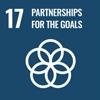
Harnessing the latest thinking, technology, and research developed by our industry experts, we support the health and well-being of communities by bridging the gap between the natural environment and the built environment, stewarding finite resources, and helping address the challenges of climate change.
We bring together subject matter experts from across our family of companies. Our sustainability innovators help shape policy and standards around the world while providing insight and guidance for our customers.
Our collective approach to Research & Advocacy is in support of the 17th UN SDG, “Partnerships for the Goals.”
Our Collaborative Approach to Research, Advocacy and Thought Leadership
1. Identify the opportunity in the industry
2. Lead collaboration with industry to build a broad consensus for leadership
3. Undertake the analysis and research to clearly state what needs to be done
4. Publish guidance and build governance
5. Implement internal awareness campaigns to expand awareness and capabilities
This initial work has led to the formal launch of Sidara’s Innovation Council.
Thought Leadership | Beyond Buildings
We believe that an integrated approach to the whole built environment is essential to deliver change commensurate with the commitments of the Paris Agreement.
In support of this, we partnered with the World Green Building Council on research and advocacy that supports a holistic view of sustainable buildings and infrastructure, resulting in our first collaboration, ‘Beyond Buildings: Why an integrated approach to buildings and infrastructure is essential for climate action and sustainability’

Thought Leadership | Whole Life Carbon of Building Systems (MEP)
Introba proudly supports the Carbon Leadership Forum as a signatory member of the MEP 2040 Challenge. To address the impact of the built environment on climate change, systems engineers have a critical role to play in both operational and embodied carbon and need to embrace a whole life carbon approach to MEP design, inclusive of fugitive emissions from refrigerants.
Learn more here

The problem with refrigerants is that they tend to have a very high global warming potential. In fact, addressing refrigerant use globally is the number one thing we can do to mitigate global warming. However, refrigerant use is on the rise globally. We are witnessing a demand for air conditioning worldwide due to improving socioeconomic conditions in many countries, falling costs of equipment, air pollution and forest fire smoke preventing buildings from being naturally ventilated, the rising temperatures from climate change, and as we are seeing a shifting to electric heating systems that rely on refrigerants.
Louise Hamot
Introba, Global Lead of Life Cycle Research Author of “Refrigerants & Environmental Impacts: A Best Practice Guide”
Sidara Annual Report 2023 34
Handprint Projects: Future of Aviation Research & Advocacy
Research on the Future of Aviation has been Led by the Landrum & Brown and Dar Teams.
If you have ever traveled by plane, you have most likely visited an airport that Sidara has partnered with, worked on, or helped design. Throughout our history, we have planned, designed and constructed more than 300 airports across six continents, from large international hubs to specialized support facilities. In today’s post-pandemic world, however, it has become clear that we have entered a new era for airports, in which their design, construction, and operation must account for the growing impacts of climate change and the energy transition, emerging AI and technologies, and changing global demographics. Therefore, we believe the airports of the future will need to be designed to focus on the following:

Changi
Sustainability, energy & climate resilience
Passenger Experience Innovation & Technology
The most successful airports in the future will be those that invest and innovate in these key areas. By bringing together our member firms to deliver the most complex and pressing projects, we continue to be the long-term partner of choice, ensuring that any airport, wherever it is needed in the world, can contribute to innovation and position itself as a hub of the future.
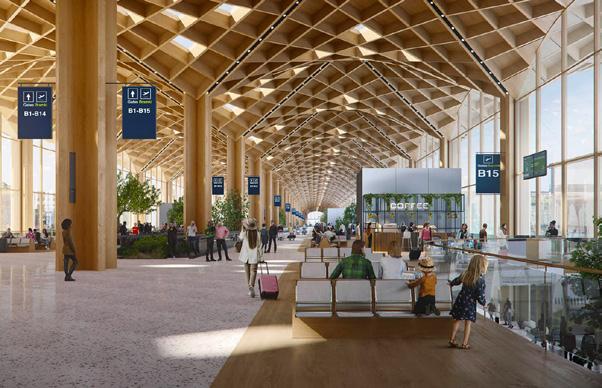
Centralny Port Komunikacyjny Design Finalist, Poland
Perkins&Will
(Photo credit: Perkins&Will)

King

Landrum & Brown
Sidara Annual Report 2023 35
Abdul Aziz International Airport, Jeddah, KSA
Dar
Charlotte-Douglas International Airport, NC, USA
(Photo credit: Perkins&Will)
Airport Terminal 4, Singapore
TYLin
/ Schmidt Hammer Lassen Architects
Energy & Emissions
Handprint Project: Centralny Port Komunikacyjny
Bringing visionary planning and world-renowned technical excellence in aviation design
Creating the future-fit centerpiece for one of Europe’s largest infrastructure ventures
The Centralny Port Komunikacyjny (CPK) is a planned transfer hub, strategically located between Warsaw and Lodz. Envisioned to integrate air, rail, and road transport, CPK promises to revolutionize transport in Poland and beyond. The new international airport is a technology-driven fully intermodal transport node, that is planned and designed for all airline business models and able to accommodate any aircraft type. The airport is modular built, to scale capacity up and down, and boasts full flexibility to accommodate all traffic types in a single facility.
As the Master Civil Engineer, Dar is designing future-fit and sustainable infrastructure for the CPK airport including everything from the runways and taxiways to the essential utilities and service lines that will drive airport operations. To support the airport’s aspirations for sustainability, Dar is providing sustainable airport planning and civil infrastructure design; highly-secure, resilient technology consulting; low-emission utilities and transportation; as well as market-leading advisory and engineering, through consultancy on future fuels infrastructure, to support the transition to sustainable aviation.

Warsaw, Poland — Dar
We are working with CPK to deliver its strategic vision, through a highly sustainable, future-fit transport hub that meets the aspirations of its communities, both now and for years to come.
Danny Aoun Dar, Director of Regional Operations, Lebanon
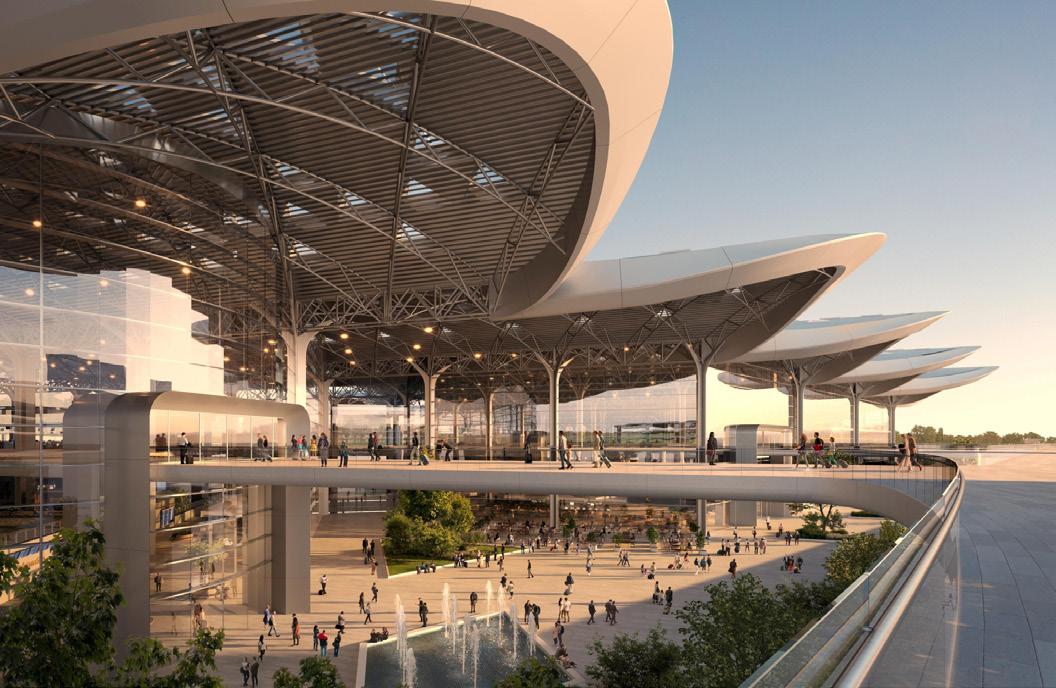
Sidara Annual Report 2023 36
Research & Advocacy
Representing Together at COP27
As part of our first-ever participation in the annual global climate change conference, we arrived at COP27 in Egypt’s Sharm El-Sheikh with an ambitious vision for the future: a unified, research-backed action plan that countries in the MENA region can follow to decarbonize three key sectors — the built environment, transportation, and water and energy resources. If implemented at scale, these recommendations would power a much more rapid transition to net zero in the region, while also improving the quality of life for communities and empowering governments to attract investments and talent.
COP27 Theme: Together for Implementation
Dar sponsored and hosted a series of panel discussions, featuring experts from companies across the collaborative — including Penspen, Introba, Perkins&Will, and Currie & Brown — as well as industry leaders and influencers such as the World Green Building Council, PwC, WEF, and C40 Cities. Our workshops focused on net-zero solutions, the energy transition, decarbonization, sustainable and smart cities, and the circular economy. Dar’s experts also joined the World Green Building Council to launch the “Roof Over our Head” campaign, which aims to improve the lives of two billion climate-vulnerable people living in informal settlements. Throughout the conference, our teams also collaborated with the Egyptian Ministry of Social Solidarity, the Egypt Green Building Council, the World Economic Forum, the Marrakech Partnership for Global Climate Action, and other regional and international stakeholders to collectively explore and promote sustainability solutions. Within Sidara, COP27 sparked our collaborative’s widest internal employee campaign around sustainability principles and thought leadership to date.
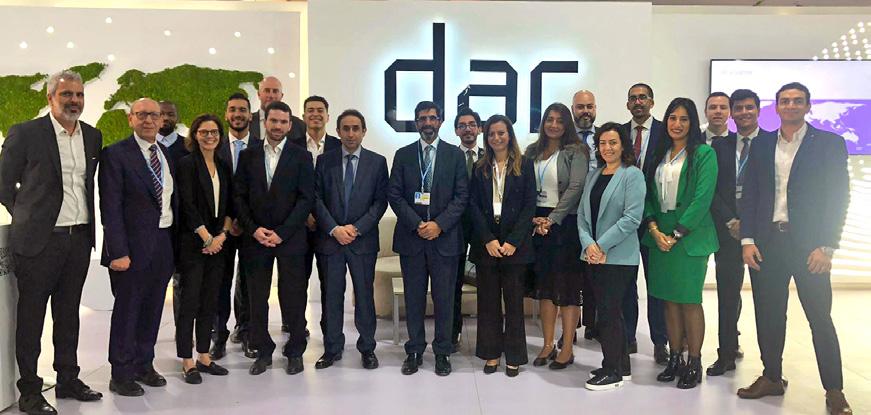


Sidara Annual Report 2023 37
Download Whitepaper
Perkins&Will Innovation Incubator Research & Advocacy
Perkins&Will Innovation Incubator
The Innovation Incubator Program supports small, focused research projects through micro-grants of company time and expenses, providing recipients with the resources needed to develop solutions that improve our business and collective creativity. The results of these explorations further Perkins&Will’s design work, improve processes, foster personal growth, and contribute to the knowledge base of our industry. Open to everyone at the firm, the program provides grant recipients 40 hours of company time, to be spent over six months, as well as $1,000 toward expenses (or 80 hours and $2,000 for teams).
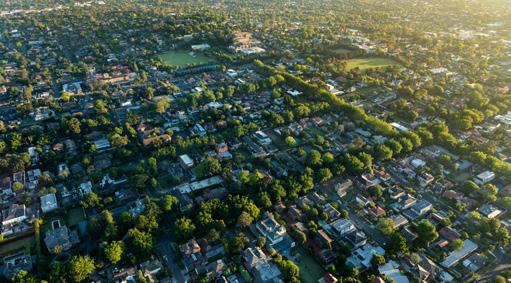
A New Formula for Neighborhood Livability
The work recognizes a need for more comprehensive metrics to evaluate neighborhoods, expanding beyond traditional factors. The authors introduced “socialized” metrics, including rent burden and median home value, alongside conventional transit-oriented development metrics. This work showcased an increased awareness around equity and access issues and the need to expand the catalog of metrics used to define “good.”

Closing the Loop on the Circular Economy
Through ongoing conversations with manufacturer’s representatives focused on material health and embodied carbon, it became evident that take-back programs for materials such as carpet and ceiling tile were not apparent to project teams, leading to a gap in the circular economy. This project employed a series of surveys completed by building owners, general contractors, and product manufacturers to learn where these gaps are most apparent and how overlaps in approaches to lowering waste and embodied carbon can be leveraged in future design work.

What’s the Future of Transit in a SelfDriving-Car World?
This study, led by Nelson Nygaard, delves into transit best practices in the era of selfdriving cars. It recommends prioritizing transit to ease urban congestion and emphasizes the need to enhance the transit experience despite autonomous vehicle competition. Cost savings and reinvestment opportunities in autonomous transit are also highlighted. The project seeks to improve transit infrastructure and promote car-free travel.

The Innovation Incubator continues to bolster our culture of innovation by providing a reliable framework in which to harness and celebrate the curiosity of any and all our staff. Recent projects like the ones featured here contribute to the Innovation Incubator program being a portal for the firm to uncover key trends even as they allow us to contribute a critical voice to the conversation on how the industry is (and should be) evolving.
Leigh Christy Perkins&Will, Principal and Innovation Incubator Lead, USA
Sidara Annual Report 2023 38
Introba Impact Fund Research & Advocacy
The Impact Fund is an internal program supporting thought leadership in sustainability and digital innovation for the built environment. It runs annually, funding projects, studies, essays, and advisory pieces that provide new insights into how to perceive, design, and develop our human environment. Above all, it provides an opportunity to reflect, question, think big, and offer innovative solutions to make the world more resilient, just, and regenerative.

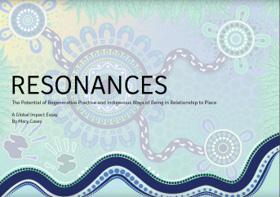


Borealis | Carbon Capture Technology: Part of a Solution to Meet Our 1.5 degC Climate Target?
This study investigates direct-air carbon capture (DAC) technology, which removes CO2 from the air and integrates it into buildings. It assesses DAC’s environmental impact, cost, and comparison to renewables, emphasizing the need for a decarbonized grid. Future phases explore DAC’s other applications, like low-GWP refrigerants and fertilizers.
Resonances: The Potential of Regenerative Practice & Indigenous Ways of Being in Relationship to Place
This essay explores the harmony between regenerative practice and indigenous viewpoints on living systems. It calls for the building industry to transition from a degenerative to a regenerative approach, prioritizing the question of “what does good look like?” in relation to sustainability. It asserts that the industry can combat climate change by adopting regenerative practices inspired by Indigenous wisdom.
Breathable Buildings: A Contemporary Examination of Natural Ventilation and its Role in the Future of Building Design
Breathable buildings aim to blend natural elements with architecture to promote health, reduce energy use, and enhance well-being. This study explores the drivers for natural ventilation in modern building design, including the impact of COVID-19 on workplaces, industry advocacy for healthier buildings, occupant health benefits, and climate concerns.
Clayton Community Center: RealWorld High-Performance Evaluation
Evaluating completed buildings’ actual performance compared to their original designs is crucial for improvement, yet often goes overlooked. Challenges include time, funding, data ownership, and competition. This study re-examined Canada’s largest Passive House building, post-COVID-19, and shared ways to assess energy consumption alignment with design and Passive House suitability for non-residential structures.
Sidara Annual Report 2023 39
Our People

Introduction to Social Impact
Diversity, Equity, and Inclusion (DEI)
Learning & Retention
Health, Safety & Well-Being
Local Communities
College of the Holy Cross Prior Performing Arts Center Worcester, MA - Silman, a TYLin Company
Introduction to Social Impact
Social Impact
In this chapter, we present our collective social impact through 2022 performance metrics, footprint stories, and handprint projects. We are presenting our 2022 performance and corresponding stories through the following sub-sections:
– Diversity, Equity, and Inclusion (DEI)
– Learning & Retention
– Health, Safety & Well-Being
– Local Communities
In future years, we will expand the ESG program to report on the following social dimensions.
Social Dimensions
S1 Employee Diversity
S2 Remuneration
S3 Turnover
S4 Health, Safety, & Well-Being
S5 Training & Education
S6 Local Communities
Our Social Impact Roadmap can be found in the appendix. Beginning in 2024, our Social Impact Network will start developing “Social Impact Action Plans” to detail specific actions and identify responsible parties to hold ourselves accountable.

Introduction to Social Impact
Sidara Annual Report 2023 41
Introba staff coming together to brainstorm collaborative solutions
Diversity, Equity, and Inclusion (DEI)
We Are Up for the Challenge!
Desired Outcomes
All companies within Sidara are dedicated to fostering and maintaining a workplace that is diverse, inclusive, and provides equitable opportunities for all. We strive to nurture a culture of respect and a sense of belonging across our companies globally.
Striving for equity within the workplace is a worthwhile challenge, as a diversity of voices at every table breeds innovation. The task of creating a workplace that fosters inclusion and a sense of belonging will be uniquely executed by each operating company, with each individual region working to address its own variety of complex challenges .
“The world is our home. And for us, home isn’t just a place. It’s a feeling.”
The above sentiment is one we feel applies to each office in which we operate, and we desire to create a working environment in which all our people feel at home within their companies.
With a goal of achieving an aspirational target of gender equality within governance bodies, we acknowledge that this requires actively building a diverse pipeline of talent for the future. Therefore, we holistically prioritize ecology, equity, circularity, and resilience.
Achieving a goal as audacious as gender equality is contingent upon the advancement of opportunities for women within the industry at large. It will require a multi-faceted approach to meet our goals, which will include, at minimum, an active approach to academic STEM outreach to build a diverse workforce and pipeline of talent, as well as addressing any inequalities which may still exist within our operations today.

Sidara Annual Report 2023 42
CREATE Lab | Singapore - Perkins&Will (Photo credit: Perkins&Will)
Diversity, Equity, and Inclusion (DEI)
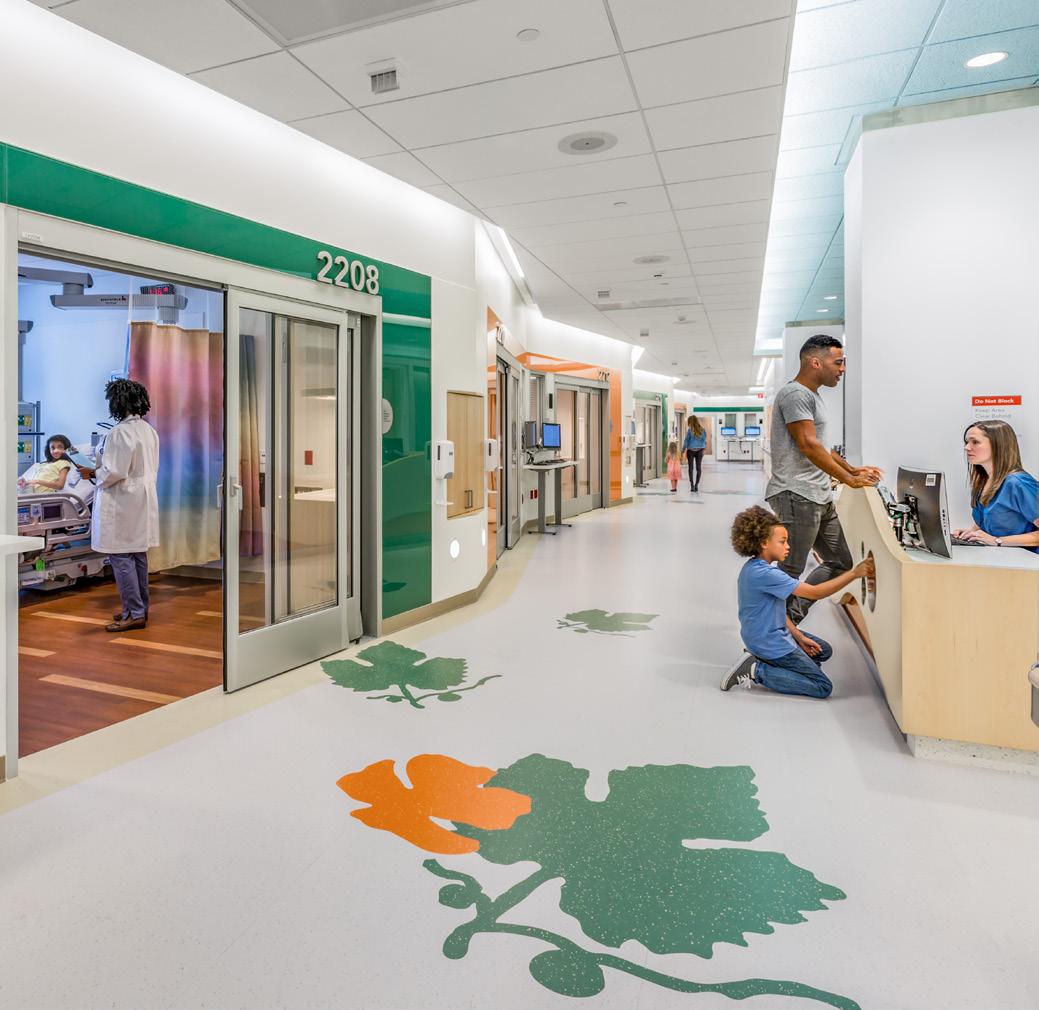
Diversity goals beyond Gender
Actions and initiatives will be expanded to ensure a sense of belonging and representation is achieved for people from all underrepresented and minority groups. Data collection for other diversity metrics began in 2023, and we will build out additional goals based on those results. We will draw our inspiration from programs such as, but not limited to, the JUST Label from the International Living Futures Institute (ILFI), on how best to gather and represent this data.
2022 Performance – Diversity, Equity, and Inclusion (DEI)
On the following page you will find a dashboard reflecting our 2022 performance in the categories of Employee Diversity (S1) and Remuneration (S2), which found:
– Gender Diversity by Pillar – In terms of gender diversity across the pillars, we’ve noted higher levels of female representation in areas such as our architectural practices compared to those with an engineering or construction focus. Perkins&Will has already achieved a commendable milestone in their journey with 50% gender diversity across their entire workforce.
– Gender Diversity by Region – Gender diversity within the Americas, Europe, and APAC are above industry average. We will continue our
work to address female representation within the Middle East and Africa, as applicable to the context of the region. Additionally, we plan to expand our research to represent industry averages regionally (currently represents USA only).
– Gender Diversity by Job Classification – In alignment with broader research, female representation begins to decrease as one’s career advances. We will continue to address barriers to career advancement for women within operations in all regions and in all Pillars.
– Remuneration – The analysis on Gender Pay Equity Distribution has provided clarity on where gaps still exist within our operations. The results in the remuneration graph on the following page communicate:
– 100% means 1:1 male to female pay ratio (achieving gender pay equity)
– >100% equates to where male employees are paid more than their female equivalent counterparts
– <100% equates to female employees who are paid more than their male counterparts.
The results of this analysis has allowed us to pinpoint current gender-pay gaps, which are being elevated for evaluation and adjustment based on all pay equity factors including education, experience, and responsibilities.
Sidara Annual Report 2023 43
Lucile Packard Children’s Hospital | California, USA - Perkins&Will (Photo Credit: Perkins&Will)
Diversity, Equity, and Inclusion (DEI)
Footprint Stories: DEI Initiatives & Awards
Silman’s Commitment to the Design for Freedom Movement
Design for Freedom (DFF) is a movement that originated at Grace Farms, and which aims to bring industry leaders together to eliminate forced labor in building materials supply chains, create true market transformation, and build a more equitable future. The movement is rapidly gaining momentum throughout the AEC community within the United States and, more recently, worldwide.
Since that first meeting on September 18th, 2018 (where Nat Oppenheimer, the Buildings Sector Leader at TYLin, was present with eight other industry professionals), DFF has grown to include over 200 industry professionals all pushing to eradicate human slavery in the built environment, both on the construction labor and supply chain sides of the equation.
Combining these principles with significant sustainability efforts within Introba, DFF has joined forces with countless organizations and teams to foster what we collectively refer to as Ethical Decarbonization — leveraging our combined efforts to better understand supply chains and realize new heights of knowledge and agency.
As part of this work, DFF has developed several tools within their Toolkit that allows design professionals and owners to embed the ideals of DFF into their projects in an effective and actionable manner. This includes links to reliable supply chain resources, sample specifications, material tracking templates, and sample supplier outreach letters and questionnaires.
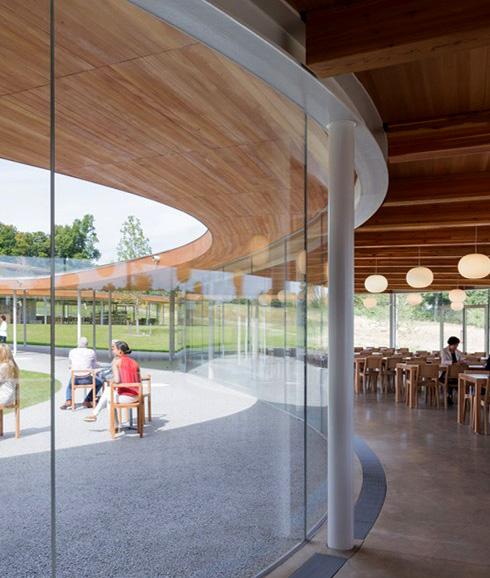
Introba’s Employee Resource Groups
Employee Resource Groups (ERG) are voluntary, team member-led groups focused on fostering diversity, inclusion, and belonging within Introba. These groups help team members build stronger internal and external connections; offer social, educational, and outreach activities; create development opportunities for future leaders; and increase engagement among team members.
ERGs are an excellent support system and vehicle for creating a culture of awareness and respect, as well as fostering diversity, inclusion and belonging within the workplace. ERGs are available to everyone currently employed or contracted with Introba. This means employees from all offices, functions, disciplines, and levels are allowed and encouraged to join, including those in management and leadership roles.
Active ERG programs include:
Perkins&Will Earns 100 Score on Human Rights Campaign Foundation’s Annual Assessment
For the fourth year in a row, Perkins&Will was named a “Best Place to Work for LGBTQ+ Equality” by the USA’s foremost benchmarking survey and report measuring corporate policies and practices related to workplace equality.
The Corporate Equality Index (CEI) rates companies on detailed criteria falling under four central pillars:
– Non-discrimination policies across business entities
– Equitable benefits for LGBTQ+ workers and their families
– Supporting an inclusive culture
– Corporate social responsibility (CSR)
Learn more here.
Sidara Annual Report 2023 44
| CT,
-
Grace Farms Headquarters
USA
Silman
Healthy Heads ERG Womxn ERG BIPOC ERG LGBTQIA+ ERG
Diversity, Equity, and Inclusion (DEI)
Handprint Project: Destination Crenshaw in Los Angeles
USA’s largest permanent outdoor art and cultural celebration of African American contributions
Fostering Culture and Community in the Heart of Black Los Angeles
During planning of the LA Metro Rail extension connecting LAX to central LA, the decision to route the rail line at ground level on Crenshaw Boulevard could have impacted the Crenshaw community, the heart of Black LA. Instead, an opportunity emerged to foster the area’s strong arts culture. Anchored by permanent and rotating art installations, 10 new public parks, exhibits, and entirely new streetscapes, this 1.3-mile-long public art and cultural experience will run along Crenshaw Boulevard and celebrate the longstanding reputation of the neighborhood as a creative incubator as well as Black LA’s impact on popular culture and social change.
This outdoor culmination of sound, color, energy, and the arts will be the nation’s largest art and cultural celebration of African American contributions to world culture and was designed around the four themes of: improvisation, firsts, dreams, and togetherness. The project documents and preserves over 200 years of history of Black people in L.A. and will also present construction career opportunities for residents and is designed to support existing local businesses and provide artists from the area with a launchpad to start their careers.

Los Angeles, USA — Perkins&Will
Destination Crenshaw has been entirely driven by the community itself, and honors not just the neighborhood as a creative hub, but also Black L.A.’s impact on popular culture and social change. Our role as architects is to translate, through design, the very real, very significant voices and energy of Black L.A.
Zena Howard Perkins&Will, Cultural and Civic Practice Leader, USA

Sidara Annual Report 2023 45
Diversity, Equity, and Inclusion (DEI)
Handprint Project: American University of Beirut (AUB) – Mediterraneo Campus
Establishing AUB’s first campus outside Lebanon
Empowering the university to serve a broader audience and to become more global, diverse, and inclusive.
Welcoming its inaugural class of students for the Fall 2023 semester, the new campus is part of the university’s “Global AUB” vision which includes expansion in the region, exploring the establishment of hubs in Africa, planning for a greater presence in Northern America, and growing the university’s online offerings — all while keeping the university strongly rooted its Beirut legacy.
The campus is anchored by a Greek plathea, or large open plaza, echoing the Beirut campus’ famous Green Oval and serving as a community space that attracts students and visitors and hosts events, talks, workshops, lectures, and shows as a center for cultural exchange.
With skylights, greenery, and photovoltaic panels featured prominently, the campus will serve as a vibrant, attractive, and sustainable destination.
The master plan also covers the second phase of the campus, which will feature a main academic building with classrooms and labs, a new multipurpose hall, and extra spaces for administration and facilities.

Featuring Greek historical architecture (agora and colonnades) and a focus on sustainability and greenery, the AUB-Mediterraneo master plan roots the campus in its surroundings, honoring the site’s industrial past, while also engaging in an overseas dialogue with the original Beirut campus — an ideal combination as AUB seeks to grow more global, more diverse, and more inclusive.
Semaan Kfoury Dar, Head of Architecture, Lebanon

Sidara Annual Report 2023 46
Pafos, Cyprus — Dar
Learning & Retention
Desired Outcomes
Learning & Retention
Within this category, we are focused on attracting, retaining, and supporting our staff with their career development. This includes internal Learning & Development programs, such as training, as well as employee retention tracking to monitor and ensure employee satisfaction.
Employees have access to learning resources and clear career paths for professional and personal development.
We actively support educational organizations and community outreach focused on the development of a decarbonized world.
When we think about “Learning & Retention” beyond our internal footprint, we are further reflecting on the projects we touch within the education sector.

Sidara Annual Report 2023 47
Boden Headquarters | London, UK - Introba
Learning & Retention
2022 Performance
2022 Performance – Learning & Retention
We are aligning our data collection around GRI 404 Training and Education, which includes the following metrics:
– Average hours of training per year per employee
– Programs for upgrading employee skills and transition assistance programs
– Percentage of employees receiving regular performance and career development reviews
For 2022, an average of 8.5 hours per employee was recorded for training. However, it was also found that the actual hours toward training may potentially be underreported. We are currently working to update tracking systems across all operating companies and regions to ensure that hours spent on training, which directly contribute to the career development of our people, are reported accurately.
Additionally, we are looking to improve the tracking processes associated with employees completing performance and career development reviews, such that this may be disclosed in future years.
2022 Reported Training Hours per Capita
8.5
Average Annual Training Hours per Capita
Sidara Annual Report 2023 48
Sidara
Social Dimensions S3 Turnover S5 Training & Education Pillar Training Hrs Headcount Training per Capita Dar 42,281 8,125 5.2 Global Infrastructure 36,231 3,243 11.2 Architecture 17,919 1,877 9.5 Project Management 39,003 2,201 17.7 Energy 3,220 943 3.4 Sidara 138,654 16,389 8.5
Dar Global Infrastructure Europe Intermediate Training Hours Training Hours Training Hours Architecture Middle East Management Project Management North America Entry-Level Africa Senior Energy APAC Executive Unknown 0 0 0 5 5 15 15 10 10 5 20 20 10 By Pillar By Region By Job Classification 8.5 Average 8.5 Average 8.5 Average
Learning & Retention
Footprint Story: Learning & Development at Perkins&Will
Exceptional L&D program at Perkins&Will Employees and teams “Thrive” through internal programs that center around their growth and development
“Thrive” is Perkins&Will’s internally designed performance management system.
It prioritizes a year-round dialogue between Champion and Partner, during which Partners (employees) work with one Champion to gather and understand 360 feedback, discuss career aspirations and set goals, and identify and complete development and training. At year’s end, we utilize a formal Review process to evaluate each Partner’s progress.
Project Climbs: Great work results from a clear understanding of each project and the unique responsibilities, skills, goals, and work styles of each team member. While we have resources needed to help us plan and staff projects, we saw that more could be done to encourage strong communication, nurture feedback, and provide further development to project teams. Project Climbs is a critical mechanism to ensure teams are set up for success, prepared to make the necessary adjustments as they go, and willing to take the time to reflect and share important lessons learned to improve our work.

Our global Learning & Development efforts are focused on our organization’s strategy and our communities’ aspirations. By closing the gap between the opportunities of our future and our capabilities today, we can manifest our full potential. Through programs, tools, and partnerships, we deliver best in class solutions to get us from where we are to where we aspire to be. At the heart of everything we do is a belief that everyone can learn, and through this continuous practice, we demonstrate to this amazing industry what it is to be deliberately developmental.
Heather Currier Hunt Perkins&Will, Global Director of Learning & Development, USA
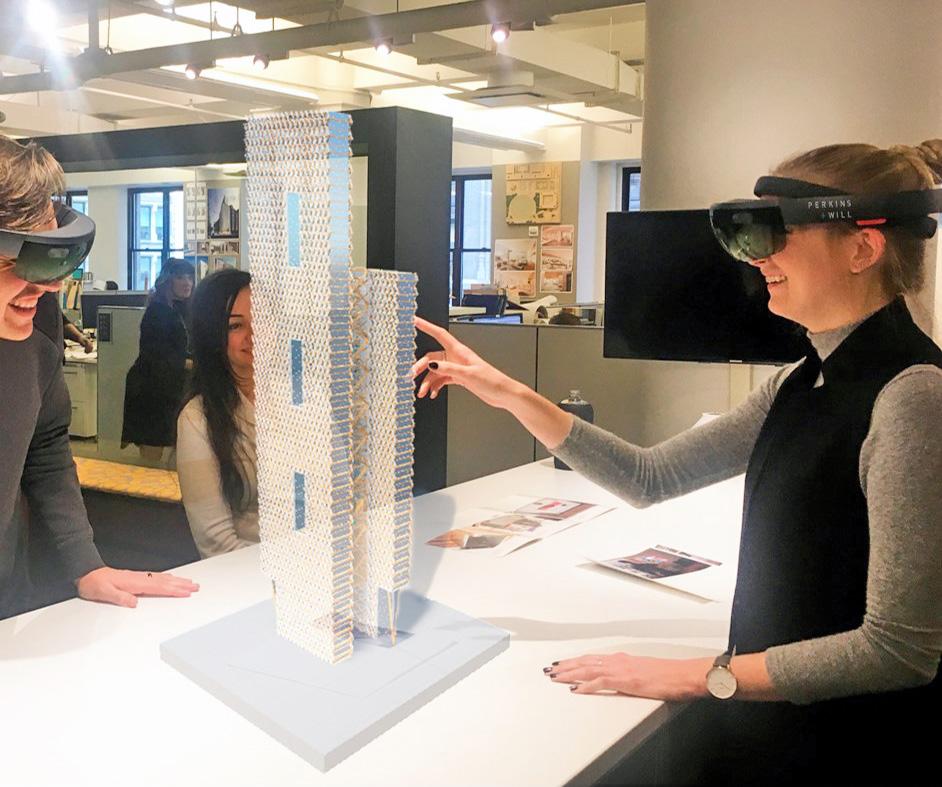
Sidara Annual Report 2023 49
Perkins&Will staff explore new applications for the Hololens
Learning & Retention
Footprint & Handprint Project: Our home at 150 Holborn in London
Our “House of Brands” — all operating under one roof improves employee engagement, retention, and performance
Showcasing collaboration, co-location, and connectivity in the heart of London
Designed and built by the companies that make up Sidara, 150 Holborn serves as an example of ingenuity as well as a purpose-built home to foster growth, creativity, and collaboration. With sustainability and data-driven performance improvements in mind, 150 Holborn has secured a BREEAM rating of Outstanding, has received an “innovator” design denotation by the Building Research Establishment, and earned a SmartScore rating of gold for its technologically advanced smart building features. It is also on target to achieve the highest building certification under LEED and makes significant contributions towards water and energy efficiency and materials use.
The 135,000-square-foot space encompasses eight floors that can house over 500 employees and includes a 2,500-square-foot landscaped rooftop pavilion/garden with 360 degree views of London. The concept evolved around a central atrium and an open staircase that runs the whole height of the building, linking easily from floor to floor and creating opportunities for chance encounters. This was conceived as the heart of the building and is characterized by transparency, connectivity, and openness.

London, UK — Sidara
The building’s design has connectivity and collaboration at its heart. Thanks to the central sculptural stair, we’ve witnessed in real time how the open plan workplaces, roof garden, and caféexhibition area have created space for reflection and opportunities for chance encounters between colleagues. We take pride in the fact that 150 Holborn will serve as a model for future workplaces for the positive effects it has on the people who use it.
Christopher Christophi Perkins&Will, Lead Architect – 150 Holborn, UK


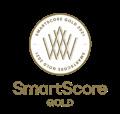
Sidara Annual Report 2023 50
(Photo credit: Perkins&Will)
Handprint Project: Student Residences at Princeton University Learning & Retention
2023 AIA New York design award winner
Expanding learning opportunities for 1,000 university undergraduates in LEED Gold dorms
This expansion of Princeton University’s campus by adding two new residential dorms is intended to increase the university’s undergraduate population by up to 1,000 students. The project consists of eight mid-rise residential towers with connector buildings featuring extensive green roofs, as well as a central dining hall located partially below grade.
The framing system consists of structural steel frames with precast plank floors at the towers and structural steel with composite slabs on the metal deck of the central dining hall. The dining hall roof framing supports the “Campus Walk”, a system of sidewalks connecting each residential tower and interspersed with landscaping and seating areas. Most towers feature pass-through portals (where the Campus Walk cuts through the buildings), and large building-end cantilevers starting at the second level above grade.
The facade’s many finishes — including precast concrete panels, masonry, glass, and metal wall panels — all required careful detailing to support and integrate into the building. The project is currently on track to achieve its goal of LEED Gold certification.

This project was ambitious in creating collaborative student learning spaces within the dormitory buildings, with several common rooms, double-height meeting spaces, art studios, public art, and performance spaces intertwined with residential space. Multiple green roofs, including a structured plaza over the central dining hall, add to the aesthetic and are the most visible aspects of the LEED Gold certification Princeton is seeking.
Brian Graves Silman, a TYLin company, Associate, USA





Sidara Annual Report 2023 51
New Jersey, USA — Silman
Learning & Retention
Handprint Project: Chou Hall at UC Berkeley
Smart sustainability and wellness in one!
University of California Berkeley, Haas School of Business, Connie and Kevin Chou Hall
To provide current and future students with the best possible setting to learn and engage in their business school studies, Chou Hall was designed with the pillars of collaboration and interaction at the forefront. Pairing bold but traditional terracotta accents with its modern, state-of-the-art facilities, designers gave special attention to the creation of diverse settings within the 74,000 square foot building.
One part “classroom”, one part “digital learning” functions to foster a stronger sense of community while still providing the landscape for world-class education. All the while being housed in one of UC’s greenest academic buildings: LEED Platinum — the highest sustainably ranking —TRUE Platinum ZeroWaste Certified and WELL Silver Certified.
Despite taking cues from traditional classroom settings, the interiors of Chou Hall feel expansive and increase Haas’ overall space by a third thanks to a new courtyard-oriented café and terraces, 12 classrooms, 28 breakout rooms, and a 300 person event space on the top floor with views of the San Francisco Bay.

California, USA — Perkins&Will
Chou Hall encompasses several of the values we are passionate about as a firm: high-performance design, optimized health and wellness, and sustainable zero-waste operations.
Dalton Ho Perkins&Will, Senior Regenerative Design Advisor, USA



Sidara Annual Report 2023 52
Health, Safety & Well-Being
Beyond OH&S to Include Well-Being
Desired Outcomes
Sidara is committed to helping our companies become the best places to work, placing the utmost importance on the health and wellness of our employees. We engage all employees according to the nature and scale of their activities in achieving the goal of zero harm to people, property, and the environment.
Occupational Health and Safety (OH&S) performance is a key measure of our business and a reflection of our values and internal culture. Maintaining high standards of performance and continual improvement builds confidence in achieving our objectives and fosters optimism for the future. Sidara is committed to providing a safe and healthy working environment for all its people and stakeholders.
Sidara has been reporting on Health, Safety & Environment (HSE) since 2020. During 2022, Sidara continued to refine and expand our performance reporting mechanism, widening participation to enable the global reporting of our HSE performance. The development of this reporting system has provided a basis from which to support our ESG goals and commitments. The HSE program has now expanded to become the ESG program, and the previous efforts are now reflected as OH&S, Employee Well-being, and Environmental Performance.
Our companies are dedicated to designing projects that not only minimize environmental impact, but also have a lasting positive influence on the health and wellbeing of the communities we serve .
Reporting on GRI
403 OH&S does not capture the full breadth of how we think about health, safety and well-being at Sidara. We are inspired by the WELL Building Standard from the International WELL Building Institute (IWBI), the JUST Label from the International Living Future Institute (ILFI), and other employee engagement ratings and surveys, including Gallup and Best Places to Work.

Sidara Annual Report 2023 53
2022 Performance Health, Safety & Well-Being
2022 Performance – OH&S
Our overall 2022 safety performance continues to compare well with our market peers, and additional technical solutions have been developed and adopted by Sidara to further promote and improve engagement and reduce risk through the reporting of safety observations. Maturity and development will benefit the investigation and reporting of incidents when they occur, and this will require further investment in the development of key personnel.
However, while we have established a solid foundation on which to develop, we must remain vigilant against complacency. To this end, we’ve adopted a structured approach, in alignment with international standards and best practices, to identify risk mitigation opportunities, support further improvement, and prioritize our focus and resources.
OH&S Training
During 2022, Sidara increased its OH&S-related training hours by 260%, rising from 7,109 hours in the previous year to 18,663 hours. While this overall improvement is impressive, on aggregate it only represents a one hour increase per employee on average.
Currie & Brown (Project Management Pillar) continues to make good use of their e-learning services to provide desktop OH&S training, while Dar conducted a great deal of Fire Safety, HSEMS, Basic Induction and Refresher training for sitebased personnel.
Penspen (Energy Pillar) outperformed in the OH&S training provision during 2022, with over 5½ hours delivered per employee, emphasizing the critical and often client-driven importance of this investment in such a heavily regulated sector.
We are setting a benchmark minimum of two hours for Pillars in higher-risk environments and adjusting this upwards to reflect their respective risk profiles and regulatory requirements.
Sidara OH&S Training – Average Hours / FTE

Sidara Annual Report 2023 54
Architecture Project Management Energy Global Infrastructure Dar Sidara (Total) Training Hours / Capita 0 0 1.02 1.33 0.36 0.24 0.49 0.43 0.39 1.02 0.95 5.47
2021 2022
Introba Canada’s Regional Director, Chris Doel, inspects a project site
2022 Performance Health, Safety & Well-Being
The Total Recordable Injuries Rate (TRIR) is an internationally recognized OH&S metric, which measures annual injuries defined by the U.S. Occupational Safety and Health Administration (OSHA) as “any work-related injury or illness that results in death, loss of consciousness, days away from work, restricted work activity, transfer to another job, or medical treatment beyond first aid.”
The presented value indicates the number of recordable injuries within the organization for every 100 employees. The TRIRs are compared against the OSHA benchmark data for the Architecture, Engineering and Related Services industry, as a subset of the Professional and Business Services sector. To date, this value has yet to be revised from its 2020 figure.
The TRIR for 2020, 2021, and 2022 is provided in the table to the right, along with peer group comparisons. Although a lagging indicator, the TRIR is a direct measure of how effective our OH&S systems are at keeping our people safe. Favorable comparisons to the available benchmarks reflect well on those systems, however, this does not detract from our intention to continually improve our performance. We remain committed to driving our injury rates lower in the future and combining the TRIR metric with other leading indicators, such as training and near-miss reporting, as we journey towards our overall goal of zero harm.
Sidara Annual Report 2023 55
Recordable Injuries by Class (2020-2022)
STF – Slip, Trip, or Fall on the same level 44% MSD – Musculoskeletal Disorder 23% MH – Manual Handling 7% RTA – Road Traffic Accident 7% Heat Stress 3% SBMOV – Struck By Moving Object or Vehicle 3% FFH – Fall From Height 10% Burn 3% 2015 0 0.1 0.2 0.3 0.4 0.5 0.6 0.7 0.8 0.9 2016 2017 2018 2019 2020 2021 2022 Dar OSHA Benchmark* Average Score (Peers)
Total Recordable Incident Rates (TRIR)
Handprint Project: Thomas Jefferson Health in Philadelphia Health, Safety & Well-Being
Strategy for the digital transformation of the hospital A
digital transformation for health care from the inside out Philadelphia,
By helping Thomas Jefferson Health in Philadelphia, USA, embark on a digital transformation, Introba is working to ensure the almost 200-year-old establishment continues to revolutionize the care it provides to patients by transforming its use of technology.
The central objective of the project was to provide operational guidance on a Joint Network Operations Center, which includes an operational model, physical design peer review, and financial model.
Introba conducted technology visioning workshops to identify the future capabilities needed and how they might be enabled by digital transformation. Patient experience technology use cases and integrations formed part of a comprehensive study to optimize workflows and process journeys in all clinical and administrative functions.
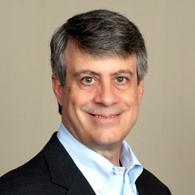
Digital transformation at TJH reduces the need for manual processes and physical paperwork and enables seamless data sharing, leading to a significant reduction in waste and a more sustainable approach to delivering patient-centric care. Additionally, energy monitoring and automated solutions can help minimize the carbon footprint associated with patient travel and hospital infrastructure, contributing to a greener and more eco-friendly healthcare system.
Mike Maselli Introba, Principal, USA
USA — Introba
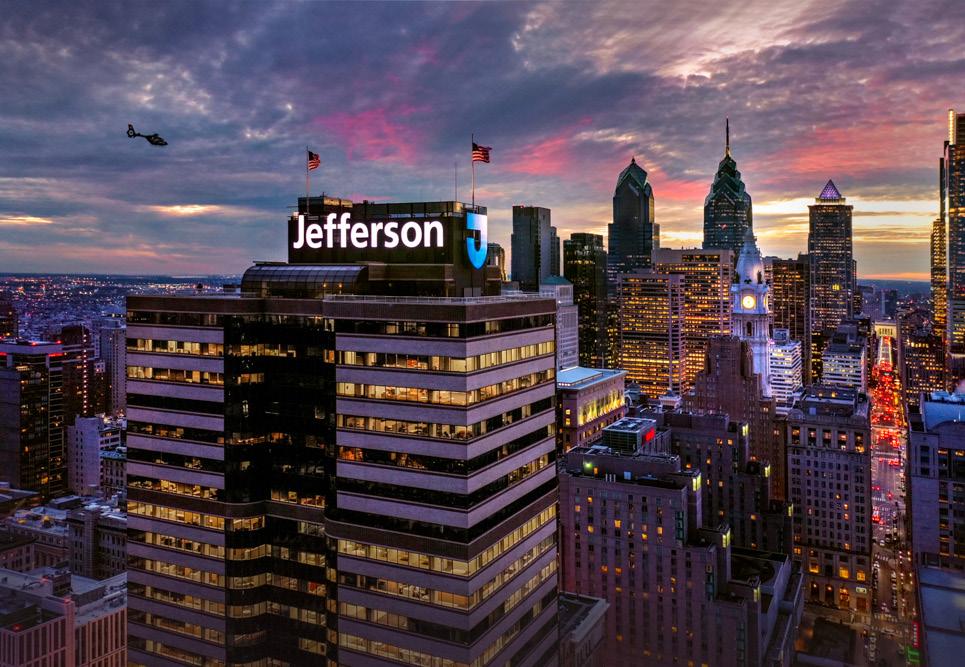
Sidara Annual Report 2023 56
Health, Safety & Well-Being
Handprint Project: Magdi Yacoub Global Heart Center
Integrating client care with world class research and innovation
Lifesaving care for Egypt’s most vulnerable
The Magdi Yacoub Global Heart Center will offer state-of-the-art and free-of-charge medical services to vulnerable and underprivileged patients, while also providing world-class training for a new generation of Egyptian doctors and healthcare providers. The center has also been designed to become a hub of innovation and applied research, particularly biomedical research.
Building on a concept by Foster + Partners, Dar successfully completed the architectural design as well as the comprehensive, integrated full engineering design of the new center. The hospital successfully integrates essential clinical care facilities with a research and innovation center — setting the stage for exceptional and future-fit healthcare delivery for vulnerable heart patients from Egypt and beyond.
Certified LEED Gold, the new center prioritizes providing a soothing, healthy, pleasant, and comfortable environment that can enhance the physical and spiritual well-being of patients, visitors, and healthcare providers alike. Lush green landscaping surrounds the hospital, providing an exceptional ambiance that is crowned by a distinctive and expansive artificial lake on the east side.

Cairo, Egypt — Dar
We are honored to have supported the exceptional Magdi Yacoub Foundation on its mission to deliver a standard bearer for healthcare in Egypt and the region, drive innovation in heart-related medical research, and strive towards reducing the prevalence of cardiovascular diseases in the poorest regions of Africa.
Mahmoud Youssef Dar, Director of Architecture, Egypt
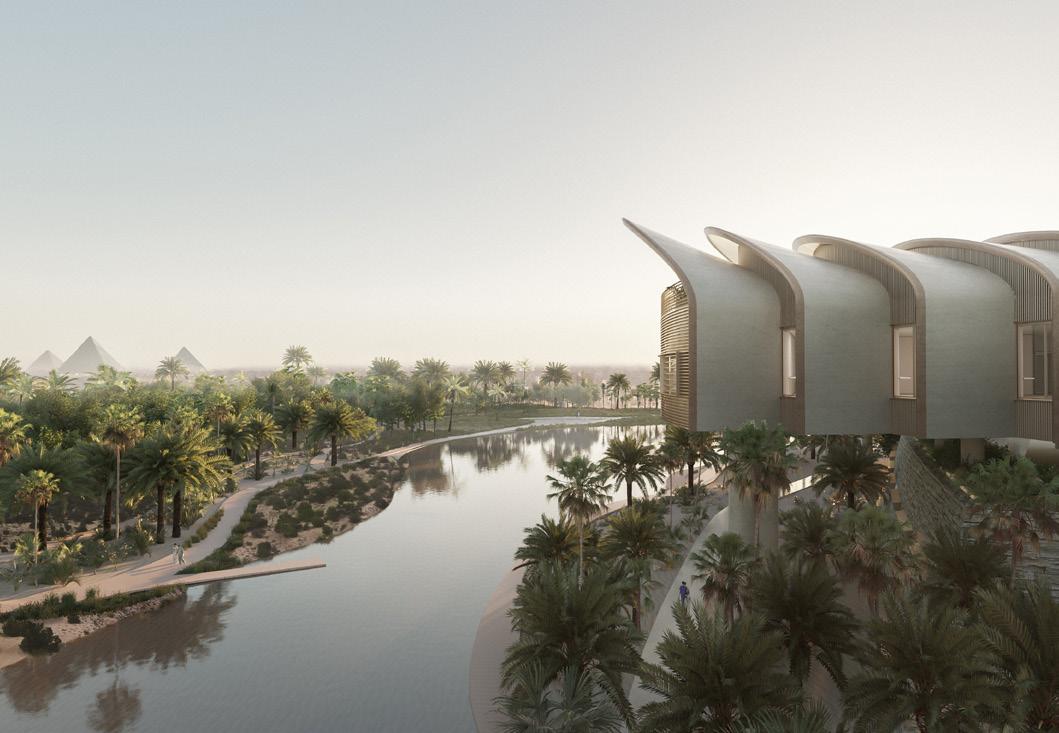

Sidara Annual Report 2023 57
Health, Safety & Well-Being
Handprint Project: Lululemon Store Support Center
Hyper-focused on health and well-being
Walking the talk on wellness: a new headquarters office for Lululemon
Lululemon is designing a new 13-story global headquarters in Vancouver, BC to reflect the company’s focus on fitness and an active, healthy lifestyle. Introba is collaborating with the company to align sustainability, health and well-being metrics with the company’s target audience via education, consulting, and documentation.
The building’s design will showcase how healthy spaces that promote occupant wellness also contribute to a more sustainable built environment. The design incorporates access to daylight, green spaces, and landscaped terraces throughout, as well as retail and restaurant space on the ground level.
The project has ambitious targets for LEED Platinum, WELL Platinum and Zero Carbon certifications. In addition, Introba developed the overall approach for biophilic design and integration of healthy materials.

Vancouver, Canada — Introba
Working with a client like Lululemon gave us the opportunity to think outside the box and we did so by leveraging an outcomes-based approach. Their understanding of well-being, tied to the roots of yoga philosophy, allowed for a creative approach, in a way that we never experienced on a project before. It required us to embrace biophilic design and a deeper understanding of how humans are innately connected to nature.
Megan White Introba, Vice President, ESG | USA
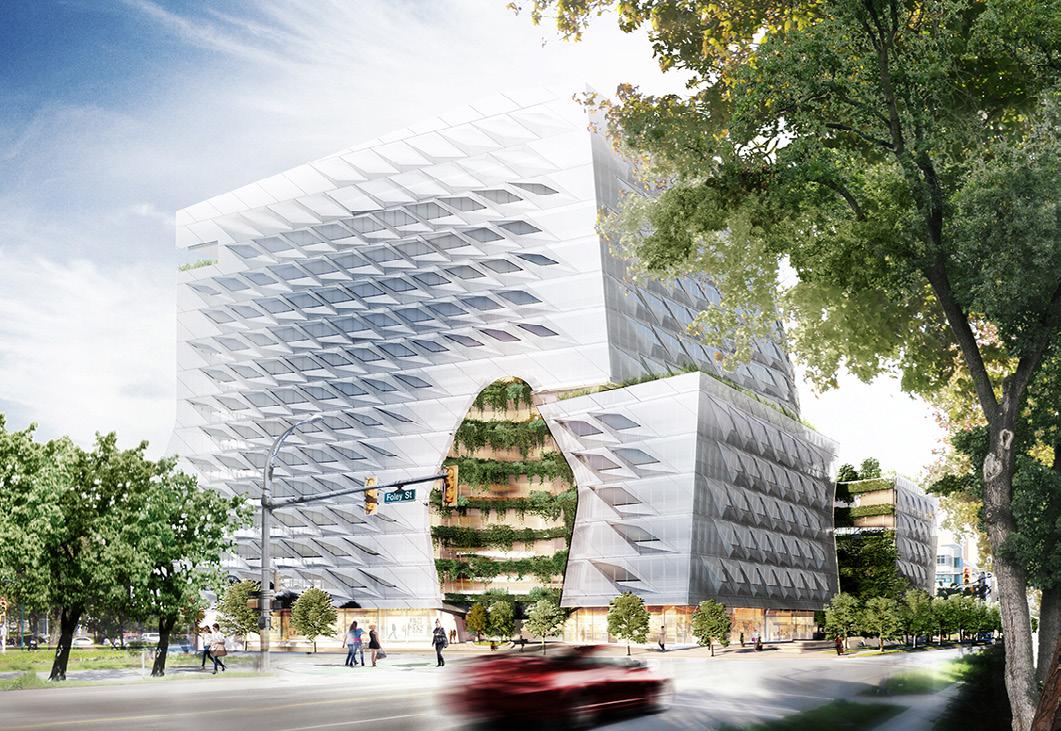

Sidara Annual Report 2023 58
Handprint Project: The Point in Utah Health,
Safety & Well-Being
600-acre site of publicly owned land to foster innovation and catalyze economic growth
Driving growth through mobility and walkability in Utah, USA
To help redevelop the 600-acres site of the former Utah State Prison, the Point of the Mountain State Land Authority hired Sam Schwartz to create a smart mobility plan for the “The Point”, designed to foster innovation, technological advancement, and catalyze economic growth in the youngest and fastest growing state in the country. Once implemented, the plan will set a leading standard for the redevelopment of publicly owned land and can serve as an example for large-scale, mobility-centric developments around the world.
The Smart Mobility program includes five key elements: a dedicated transit circulator, an extensive, high-quality active transportation and micro-mobility network, electric car share, mobility hubs, and a mobility as a service (MaaS) program and app.
Although the site conditions and location for The Point are unique, the ideas can be replicated in other cities and inspire developers building multimodal communities or retrofitting neighborhoods to deliver a broad range of mobility options.
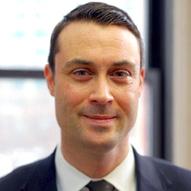
The Plan we developed demonstrates a completely new paradigm for urban development. The compact, walkable, urban design combined with a full vertical mobility system will achieve greater connections and enhanced community with a fraction of the greenhouse gas emissions compared with a traditional site plan. Our team created a template for sustainable mobility systems that can be replicated around the world.
Joe Iacobucci
Sam Schwartz, a TYLin company, Mobility Practice Leader, USA
Utah, United States — Sam Schwartz, a TYLin company

Sidara Annual Report 2023 59
Local Communities
Pro Bono Projects Volunteering STEM Education
Desired Outcomes
Sidara is committed to creating volunteering opportunities inside of our organizations where employees can be actively involved in the support of their local communities.
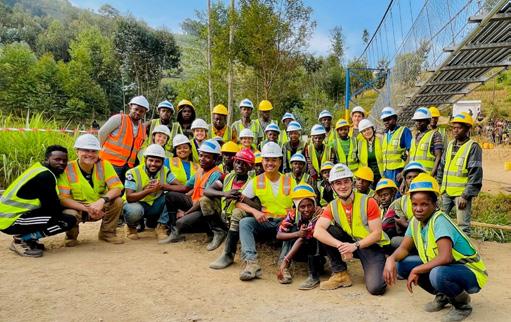
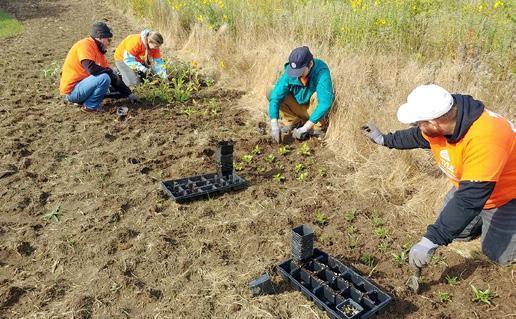

Our companies are excited to partner with non-profit organizations and under-resourced communities which can positively benefit from receiving our services pro bono.
Supporting the communities in which we work and live through our design services. We partner with local non-profit organizations who need engineering and design services to advance projects which serve under-resourced communities.
Projects featured include:
– Building Equity Initiative (BEI)
– Bridges to Prosperity
– resilientSEE
– Third Space Commons
Offering up our time by going directly into our local communities and engaging in volunteering activities, such as beach cleanups, reforestation, soup kitchen assistance, etc.
Projects featured include:
– Supporting local communities in Mexico
– Days of Service – POTS Bronx
– Keeping the Earth Green
– Social Inclusion via the Aura Foundation
– Green Apple Day of Service
We offer support in the form of education and shared expertise to build an inclusive talent pipeline, ensuring our future teams are representative of the communities in which we live and work. To this end, we start early, engaging with K-12 and university students regularly and introducing them to exciting opportunities within the engineering and design industries.
Projects featured include:
– ACE Mentorship & Scholarship Fund
– Adopt a Class Program
Sidara Annual Report 2023 60
Local Communities
Footprint Stories: Our Community Support Programs
TYLin: Building Bridges in Our Community
Running from late September to early October, this year’s BUILDing Bridges in Our Community Week (BBC Week) included partnerships with a diverse range of organizations across the Americas, from Canada in the north to Panama in the south. With the aim of connecting TYLin’s people with local communities, this year’s effort involved nearly 300 volunteers from across the organization and included such activities as providing meals and medical aid, building structures, planting trees, and cleaning streets.
In addition to building lasting relationships with local organizations, BBC Week serves to foster deeper connections between employees. The annual event is managed by the BUILD Task Force, an employee-led group focused on deepening the firm’s understanding of diversity, equity, and inclusion, and was designed to advance TYLin’s vision to connect the people, places, and ideas needed to build smarter, more resilient, sustainable, inclusive, and equitable communities.
Introba Gives
The Introba Gives program is a global framework formalizing our commitment and approach to giving back to the communities in which we work and live.
The program focuses on:
– Supporting our communities and those most vulnerable through our time, skills and funds
– Improving accessibility to charitable and humanitarian opportunities, platforming events, and supporting and supporting employees with flexible paid volunteer time
– Introducing a financial process to support pro bono work by using our design skills to benefit non-for-profits
– Creating more consistent and wider reaching impacts
The Introba Gives program provides employees from all locations with four flexible volunteer hours to be used throughout the year.
Social Purpose Program at Perkins&Will
The Social Purpose program gives Perkins&Will employees a chance to contribute to their communities in more personal ways, providing pro bono professional services to nonprofits to whom such services would otherwise be unavailable. Projects address human needs such as affordable housing, childcare, healthcare, and education. Whether it’s offering design or “sweat equity,” participants in the program are inspired by the power of human connection.
Perkins&Will published “Together, We Design: Stories of Giving Back Through Community Partnerships,” which showcases inspiring organizations that extend a hand to people in need — from children and teens experiencing homelessness to communities in areas at high risk for natural disasters. These organizations, and the people behind them, are everyday heroes: They see a problem and do everything in their power to help.

Sidara Annual Report 2023 61
Local Communities
Footprint Stories: Silman’s Building Equity Initiative Pro Bono Projects
Silman’s Building Equity Initiative
Silman, A TYLin Company, aims to serve the public good each year through its Building Equity Initiative (BEI). More specifically, the program offers pro bono or low-cost design services to non-profits and public programs, bridging the gap in access to essential facilities such as healthcare, education, and economic services. BEI’s mission is to utilize the company’s design skillset to create spaces that strengthen communities and contribute to societal equity, particularly in the areas of housing, education, healthcare, and access to culture. Silman aims to spend 1,000 hours annually toward BEI projects like the Mwabwindo School in Zambia, Neighborhoods Now, and Rice University Auxiliary ADU.
Additional Silman BEI projects:
The Black School, New Orleans, LA – In collaboration with Lot-ek, this pro bono project will create a new building for an experimental art school teaching radical Black history.
Arab American Family Support Center, Brooklyn, NY – The Arab American Family Support Centers provide social services to immigrants and refugees. On this project, Silman collaborated with Studio Forto to structurally re-support the existing framing and allow for a new ADA lift.
Vocal-NY, Brooklyn, NY – A new headquarters for Vocal-NY, a statewide grassroots organization that builds power among lowincome individuals directly impacted by HIV/AIDS, the drug war, mass incarceration, and homelessness. This project, located in Gowanus, was designed in collaboration with Framework Architecture.
On End, Cleveland Public Library, Cleveland, OH – A public art project designed by Yeju Choi and Chat Travieso as part of a larger annual public art series. Scattered across the courtyard, the colorful sculptures are constructed to create expressive stacked and cantilevered assemblies.
Bowery Mission, New York, NY – Silman provided pro bono emergency facade repair design services on both the Bowery Mission office building on Lafayette Street, and the historic flagship soup kitchen/rescue mission building on Bowery. This is the third collaboration with the non-profit following an earlier feasibility study for a New Jersey location. The Bowery Mission provides shelter to over 300 unhoused New Yorkers per night.


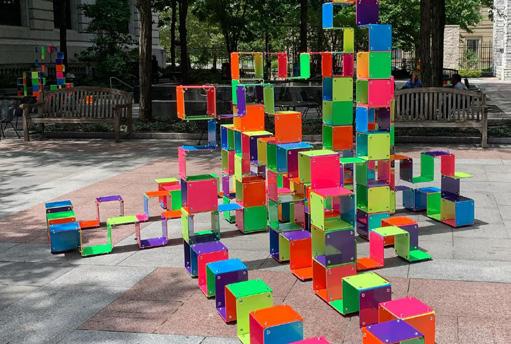
Sidara Annual Report 2023 62
Mwabwindo School, Zambia
Bowery Mission, New York, NY
On End, Cleveland Public Library, Cleveland, OH
Credit: Yeju Choi & Chat Travieso
Local Communities
Footprint Stories: Pro Bono Projects
TYLin designs the Bishenge Hybrid suspension bridge in Rwanda
TYLin, in collaboration with Bridges to Prosperity, constructed an inaugural hybrid suspension bridge over the Gasumo River at the Nyamagabe municipality in Rwanda. The seemingly straightforward design holds profound significance, offering passage for school children (even during rainy season), boosting the local economy, supporting local businesses, and enhancing healthcare accessibility, all aligning with Bridges to Prosperity’s mission of combating rural isolation to foster prosperity.



ResilientSEE Puerto Rico Water Filters Campaign from Perkins&Will
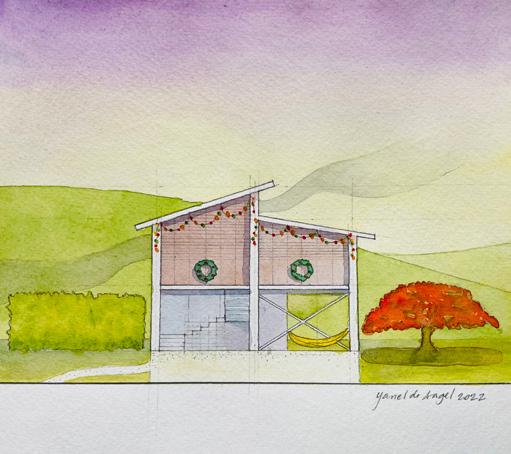
Following Hurricane Fiona’s impact on Puerto Rico in September 2022, the southern part of the island was left with 12 to 20 inches of flooding, destroying homes, roads, and bridges. In response, resilientSEE-PR, Bags of Love, and Círculo de Puerto Rico, three organizations dedicated to post-disaster recovery since Hurricane Maria in 2017, launched a fundraising campaign to provide water filters for three flood-stricken rural communities. With a $5,000 goal for 500 filters, resilientSEE successfully raised $2,700.
ResilientSEE Puerto Rico Earthquake Response from Perkins&Will
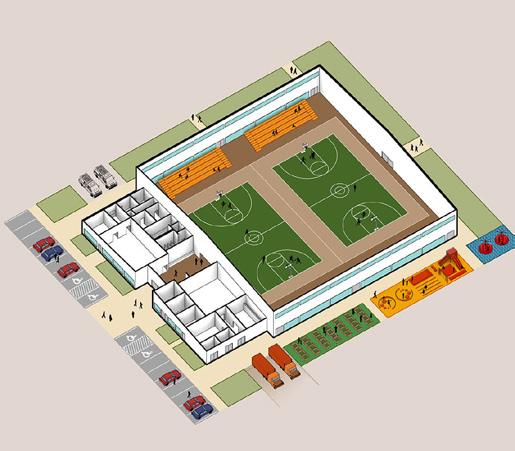
After powerful earthquakes hit Puerto Rico, Perkins&Will collaborated with local non-profits to design the Guánica Resilient Community Center & Emergency Center, a year-round community space. Equivalent to the size of two basketball courts, the Center will offer community support, such as a community kitchen and laundry, and legal and physicalmental services. It will also serve as a safe shelter during emergencies for residents and their pets. (More details on pp 43 of link)
Sidara Annual Report 2023 63
Local Communities
Footprint & Handprint Project: Pro Bono Services for Third Space Commons
Introba and Third Quadrant Design (TQD) dive into Embodied Carbon
Introba has supported the new collaborative workspace and sustainability lab, Third Space Commons, led by the TQD team within the Faculty of Applied Sciences at the University of British Columbia, Canada. As part of its global Introba Gives Initiative, the team provides coaching and practical advice, benefitting communities worldwide through volunteering and pro bono projects.
Introba Gives also allows junior engineers, such as those at TQD, to take more ownership and responsibility on projects while leaning on the knowledge and expertise of their mentors whenever necessary . This latest project, which focused on the use of hempcrete, demonstrated how TQD’s design would result in 65% lower carbon emissions, which aligns with both companies’ missions to increase awareness around net-zero carbon and netzero design practices on campus, in the city, and beyond.

Very enjoyable and a privilege to work with the TQD team. I was extremely impressed with their ideas, enthusiasm, and professionalism. Meeting tomorrow’s designers helps sharpen our focus within the industry.
Thomas Bamber Introba, Associate, Canada

Sidara Annual Report 2023 64
British Columbia, Canada — Introba
Footprint Stories: Volunteering in our Communities
Local Communities Penspen: Supporting Local Mexican Communities
The Penspen team operating in Mexico has volunteered on several projects within their communities, including:
Food delivery in Villahermosa: The team helped deliver food for day to people living without a home in Villahermosa, Tabasco. As a result, local charity “Comerdor Sabor Esperanza” saw more than 100 people in need receive a hearty breakfast. Penspen encourages all its global teams to take time and volunteer for causes they are passionate about.
Beating plastic pollution: Penspen’s team is collaboration with the Tapi Group and Mexican Association for Aid for Children with Cancer on their “Banco de Caps” project. Since May 24, 2023, they have been helping deposit plastic lids of all shapes and sizes into a special collection point. They are then recycled and sold to obtain financial resources that will be used to further help the cause. The Mexican team is also running a separate recycling initiative to promote the correct separation of waste material.

Sam Schwartz, a TYLin Company: Providing the Community with Help and Hope
As part of their inaugural Days of Service initiative, New York City office members volunteered their time to the Part of the Solution (POTS) Bronx program, which offers a mosaic of services to create a pathway forward for Bronx residents seeking assistance. POTS helps tens of thousands of people every year with a variety of needs, including providing meals through their Food Security programs, workforce development, and Dignity and Wellness services, to name a few.
Greeley
and Hansen, a TYLin company: Helping Keep the Earth Green
Earth Day Clean-ups: To help mark the yearly awareness day, Community Engagement Employee Impact Group team members around the globe volunteered at industry-organized community cleanups to help remove invasive plants, collect and distribute native seeds, and pick up waste material in their communities to restore biodiversity and wellness to native ecosystems.
Improving Urban Environments: As part of Arbor Day, team members at the Guayaquil, Ecuador office participated in an industry-organized tree planting event, where they assisted the Environmental Engineering Society of Ecuador in planting 75 trees in a nature reserve to help with their green infrastructure.
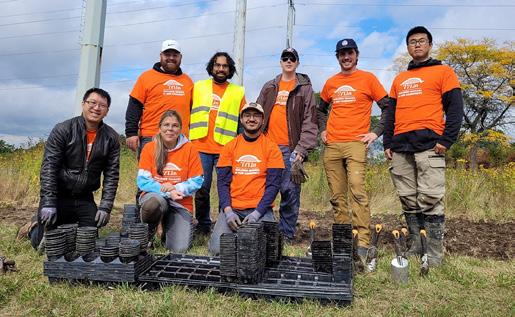

GPO, a TYLin company: Social Inclusion
Since 2012, GPO has been collaborating with the Aura Foundation, a non-profit organization dedicated to the social and labor inclusion of people with intellectual disabilities in Spain. Employees work with the foundation to provide training and skills, as well as building opportunities, with the hope of inspiring and providing additional pathways toward employment and empowerment.
Sidara Annual Report 2023 65
Local Communities
Footprint Stories: STEM Education
Dar’s Commitment to Green Apple Day of Service
For the past seven years, volunteers from Dar have been holding Green Apple Day of Service events at different schools as part of their commitment to transforming schools into greener and more sustainable learning spaces. The Green Apple Day of Service is an initiative by the United States Green Building Council (USGBC), one that brings volunteers from around the world together to host local service projects that make schools healthier and more sustainable. Volunteers from Dar and its partners used highly interactive workshops and tree-planting events to raise awareness of sustainable development and green building among school-age students.

Sam Schwartz’s, a TYLin company ACE Mentoring & ACEC Scholarship Fund
Sam Schwartz has taken part in the Architecture, Construction and Engineering (ACE) mentoring program for many years. The program provides high school students interested in ACE fields with career guidance, financial support through scholarships and grants, and a hands-on education through mentor projects. Sam Schwartz also contributes to the ACEC NY Scholarship fund, which awards scholarships to outstanding engineering students throughout the state of New York.
Since the program’s inception in 2002, it has helped hundreds of students and raised $1.2 million dollars to date.


Landrum & Brown’s “Adopt a Class” program
Landrum & Brown engages in a variety of outreach programs to promote workforce development, provide mentorship and scholarships, and implement sustainable policies and initiatives. This forms part of its work in making corporate social responsibility a key effort in the communities where they live and work. One such program is Adopt a Class, which puts their technical experts in classrooms to teach STEM or aviation-related classes to elementary and high school students within the United States.
Sidara Annual Report 2023 66
Green Apple Day of Service – Beirut, Lebanon
Our Governance

Governance Overview
Governance Structures
Committee Membership
ESG Governance
Risks & Compliance
Hackbridge Primary School | London, UK - Introba Credits:
Studio Stagg
Governance Overview
Desired Outcomes
Introduction to Governance
Starting in 2018, we established a formal governance program that would provide direction, unify us around our mission, create alignment within strategy and structures, and ultimately monitor and improve performance.
Sidara collectively prioritizes accountability and integrity throughout our operational practices. We commit to actively promote gender diversity within governing bodies, manage risk and compliance, and foster a culture of transparency.
Here you will learn about our governance journey to date, our current governance practices, and the projects in place to grow the program over the coming years through the following sub-sections:
– Governance Overview
– Governance Structure
– Committee Membership
– ESG Governance
– Risk Compliance
We are committed to ensuring our ethical practices are underscored by strong economic performance, driving a responsible approach to growth and business interactions.
In future years, we will expand the ESG program to report on the following governance dimensions (see table below). You will find a detailed table of 2022 performance for all Governance dimensions in the roadmap in the appendix
Governance Dimensions
G1 Diversity of Governing Bodies
G2 Policies & Procedures
G3 Governance Structures
G4 Economic Performance
G5 Commitments & Certifications
G6 Risks, Ethics, & Compliance

Sidara Annual Report 2023 68
Desert Nest (Qatar Floriade Expo Pavilion) | Almere, Netherlands - Dar
Governance Overview
Governance Structure
Sidara maintains a well-established governance structure, comprised of a Board of Directors and five standing committees: Audit Committee, Leadership Development Committee, Investment Committee, Executive Committee, and Risk Committee.
This structure is designed to establish governance from the top down, with the Board and its Committees providing oversight and guidance to the Pillars.
Over the last 18 months, this structure has expanded to include the establishment of Sustainability, Digital, and Innovation Councils, which provide concentrated focus by professionals with the requisite knowledge and expertise.
Sidara is committed to rigorous governance across its organization, ensuring transparency and accountability.
Governance Project
Sidara recognizes that good corporate governance is not static and is committed to continually evolving to meet changing circumstances and requirements, and support growth and sustainability.
The world in which Sidara operates is a changing landscape driven by technological advances and increasing demands for sustainability and social responsibility. 2023 marked the launch of a Board-driven governance project, led by our Executive Director Bashar Rihani, aimed at evolving and improving Sidara’s corporate governance to address these changes.
The project follows the corporate governance framework of the Wates Principles, focusing on:
– Purpose and leadership
– Board Composition
– Director Responsibilities
– Opportunity and Risk
– Remuneration
– Stakeholder Relationships and Engagements
Good governance is not just important for Sidara but for all the communities and societies where we work. Therefore, the sustainability features and positive, long-lasting impacts of our project are paramount.
Governance of Sustainability
A commitment to sustainability is a longestablished part of our culture. Sidara was founded in 1956 by Dr Kamal Shair, a social entrepreneur with a desire to improve life for the people who lived and worked in Sidara’s environment.
“One of my key aims in founding a consultancy business was to establish an enterprise — a sustainable enterprise — that would go on providing jobs and creating wealth for the societies in which it operated for generations to come.” – Dr Kamal Shair
Sidara continues, under the leadership and direction of its chairman Talal Shair, to build on its sustainability-focused foundation via its newly launched governance project and the formation of the Sidara Sustainability Council.
“As a leader, I aim to build a culture of greater collaboration and responsibility across our more than 300 offices and over 19,00 employees, while upholding Sidara’s commitments to sustainability, net zero and ESG.” – Talal Shair

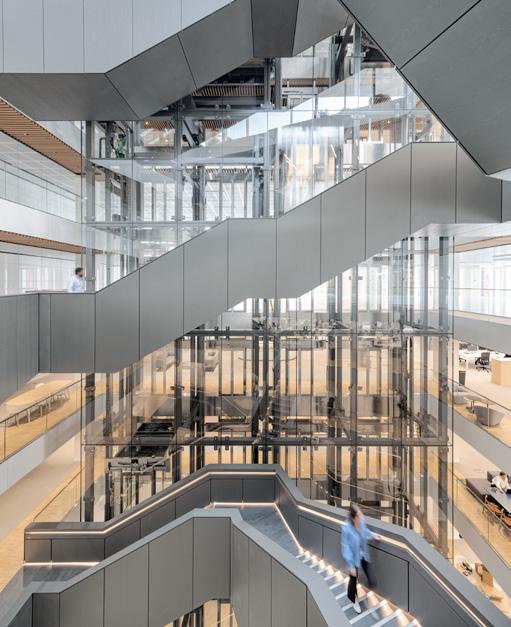
Sidara Annual Report 2023 69
Sidara HQ 150, Holborn | London, UK - Perkins&Will
Governance Structure
Sidara’s Board of Directors are responsible for the stewardship of Sidara and ensuring that management serves and protects the long-term interest of all our stakeholders. To facilitate its governance, the Board is supported by its five standing committees who have a clearly defined purpose and goals.
Key Duties:
Executive Committee
– Manage operational performance of the group
– Manage group strategy
– Oversee and collaborate with strategic leadership councils
Audit Committee
– Monitor integrity of company’s financial reporting
– Oversee external auditor process
Investment Committee
– Develop and manage investment strategy for the group
Leadership Development Committee
– Nominateof directors, committee members and advisors
Risk & Compliance
– Provide oversight and identify challenges to the Group’s enterprise risk management
These committees are composed of executives, nonexecutives, and independents.
Shareholders
Group Governance
Shareholders Partnership Wealth Committee
Chairman / CEO
Board of Directors
*Boards are in various states of formation therefore not included in governing bodies data for 2022 disclosures. “Governing bodies” includes Sidara Board of Directors, Sidara Executive Committee, and Pillar Board of Directors.
Sidara Annual Report 2023 70
Compliance
Advisory Board Corporate Center Innovation Council Sustainability Council Digital Council Executive Committee Committees: Audit Investment Leadership Development Risk &
Buildings & Infrastructure Global Infrastructure (Engineering, Advisory & Systems) Architecture & Design Project Management Energy Infrastructure
Governance Board* Board* Board* Board* Board*
Pillar
Committee Membership
Board of Directors
Talal Shair — Chairman
Bashar Rihani — Executive Director
Bassam Shakhshir — Executive Director
Danny Aoun — Executive Director
Neil Bruce — Non-Executive Director (Independent)
Phil Harrison — Executive Director
Sari Gedeon — Executive Director
Risk & Compliance (R&C) Committee
Peter O’Sullivan — Chairman
Andre Samaha — Committee Member
Gillian Empringham — Committee Member
Nyree Quintero — Committee Member
Philip English — Committee Member
Teymour Salaam, Committee Member
Tyson Curcio — Committee Member
Wajdi Abou-Izzeddine — Committee Member
Audit Committee
Ibrahim “Abe” Saad — Chairman (Independent)
Beshara Wakim — Committee Member
Camille Sifri — Committee Member (Independent)
Euan McEwan — Committee Member (Non-Executive)
Khalil Darawish — Committee Member (Non-Executive)
Executive Committee (Excom)
Talal Shair — Chairman
Alan Manuel, CEO — Currie & Brown
Bashar Rihani — Executive Director
Bassam Shakhshir — Executive Director
Catherine Tobiasinsky — Group Chief Growth Officer
Danny Aoun — Executive Director
Gillian Empringham — Group Head of Human Resources
Michael Helou — Group Chief Strategy Officer
Matthew Cummings, CEO — TYLin
Peter O’Sullivan, CEO — Penspen
Philip English — Group CFO
Phil Harrison, CEO — Perkins&Will
Sari Gedeon — Executive Director
Teymour Salaam — Group Legal Counsel
Leadership Development Committee
Talal Shair — Chairman
Abeer Tarawneh — Committee Member
Charles Malek — Committee Member
Gillian Empringham — Committee Member
Sari Gedeon — Committee Member
Investment Committee
Talal Shair — Chairman
Ibrahim “Abe” Saad — Committee Member (Independent)
Michael Helou — Committee Member
Mulham Sleiman — Committee Member
Sari Gedeon – Committee Member


Sidara Annual Report 2023 71
Sidara
150, Holborn | London, UK - Perkins&Will
HQ
Sidara’s Innovation Council Committee Membership
This initiative serves as the bedrock of our innovation strategy, enabling the convergence of ideas, talent, and technology to fuel sustainable growth and competitive advantage.
The Innovation Council was formulated in 2022 and launched in 2023 with the vision to cultivate an environment that nurtures creativity, fosters cross-functional collaboration, and expedites the transformation of ideas into tangible outcomes. Over the course of monthly meetings and ongoing projects it seeks to address the following objectives:
1. Culture of Collaborative Innovation: Cultivate a culture of client-driven innovation, creativity, and interconnectedness.
2. Innovation Engine: Establish an innovation platform and orchestrate the innovation process.
3. Establish External Collaborations and Industry Engagement: Position ourselves at the forefront of contemporary innovation.
Innovation Council Members:
Lara Karim, Global Innovation Lead (Chair — Sidara)
Charles Malek, Director of Structure and Bridges — Dar
Damien Kenny, Director — Currie & Brown
Daniel Horner, Director of Planning & Urban Design — Dar
Faysal Shair, Head of Digital Solutions — Dar
Ibrahim Ibrahim, Managing Director (Portland) — Perkins&Will
Tom Price, COO — TYLin
Yehia Madkour, Director of Innovation — Perkins&Will

We stand at the cusp of a transformative journey, one that promises to redefine our approach to innovation, collaboration, and organizational growth. In a rapidly evolving business landscape, where innovation is the linchpin of success, our organization acknowledges the imperative of establishing a resilient and future-ready innovation Program.
Lara Karim
Sidara,
Senior Associate, Global Innovation Lead, Lebanon

Sidara Annual Report 2023 72
Boulder Commons | Colorado, USA - Introba (Image credit: (Bruce Damontey)
Sidara’s Sustainability Council ESG Governance
The Sustainability Council is comprised of sustainability leader representatives from across the Pillars who serve as both internal consultants and subject matter experts. The Council’s role is to development and drive sustainability strategy across three key areas:
– Internally (ESG)
– Externally (Service Offerings)
– Industry Impact (Advocacy & Research)
For the 2022 data collection year, the Council identified our Pillar ESG champions in spring 2022, working closely with local representatives and subject matter experts from within the operating companies. These Pillar Sponsors report up to their respective CEOs and support the ESG Consulting Team. Their roles included supporting the execution of the materiality assessment, data collection, attending stakeholder engagement sessions for target setting, and integrating ESG into business operations.
As our program takes root, we are expanding the roles and structures to include the following representatives from each Pillar:
– Pillar ESG Sponsor
– Pillar “E”, “S”, and “G” Champions
This enables us to launch ESG impact networks that improve peer-to-peer learning.
Sustainability Council Pillar ESG Champions

Balsam Nehme Head of Sustainability Dar
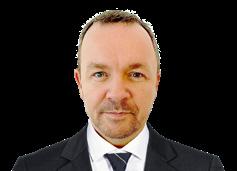

Ian MacLeod Chief Human Resources Officer TYLin
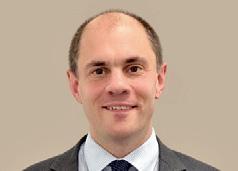
James Grinnell People Director Currie & Brown

Katia Semaan Human Resources Manager, Dar

Preethi Santhanam Vice President, Human Resources, Introba

Kathy Wardle Principal & Regional Director of Regenerative Design, Perkins&Will

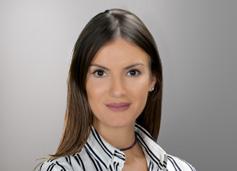

Adam Mactavish Director Currie & Brown
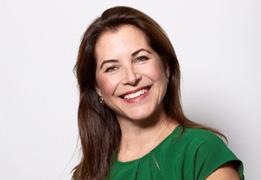
Catherine Tobiasinsky Chief Growth Officer Sidara

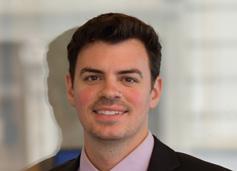
Balsam Nehme Head of Sustainability Dar

David Morgan Quality Manager Penspen


Talar Mouradikian Senior CSR Coordinator Dar
Megan White Vice President, ESG Introba
David Morgan Quality Manager Penspen Director of Global Sustainability Introba
Bobby Irven Communications Manager Sidara
Rana Najm Senior Human Resources Specialist Dar
Rachel Jordan-Evans Executive VP Human Resources – Penspen & Sidara Head of Talent

Kathy Wardle Principal & Regional Director of Regenerative Design, Perkins&Will

Sidara Annual Report 2023 73
Risk & Compliance
Risk Management Structure
Delegated authority for risk management is provided to:
– Risk & Compliance Committee (RCC)Sidara’s RCC is responsible for supporting and guiding oversight and challenge of Sidara’s risk management and compliance programs and sets the objectives for the Risk & Compliance function.
– Group Risk & Compliance Forum - The Group Risk & Compliance Forum is a meeting of risk & compliance leaders and legal representatives from across the Group, chaired by the Group Head of Risk & Compliance, aimed at ensuring a common approach to risk across the Group.
Focus Areas
Sidara monitors its risk management to continuously improve and update its risk and compliance frameworks. Areas currently being focused on include the following:
– Group Enterprise Risk Management - Sidara is developing its Enterprise Risk Management arrangements, undertaking a full top-down review of risks faced by the Group which is supported by bottom-up risk exercises for each strategic Pillar. We are developing internal systems, aligned with ESG, to support and improve the visibility and reporting of risks within and across the Group. Our Enterprise Risk Management approach is focused on supporting decision making, strategy development and the achievement of Group objectives.
– Group Compliance and Controls - Sidara are defining and enhancing risk and compliance controls and related group policies and Group standards to develop consistency across the Group whilst recognizing the independent cultures and requirements of the strategic Pillars.
– Anti-Bribery and Corruption - Sidara has zero tolerance for bribery and corruption. Sidara has policies and procedures in place to support this position and implements group wide eLearning to educate and train staff on compliance on a regular, recurring basis.
– Due Diligence - Sidara has procured, set up, and implemented a Group-wide risk-based assessment solution for clients, suppliers, subconsultants, subcontractors and other business partners via a due diligence tool provided by Dow Jones. This enables the Group to undertake detailed due diligence checks for issues such as sanctions, money laundering, adverse media, and modern slavery violations.
– Business Continuity - Sidara is building on the resilience culture within key parts of the Group as well as the lessons learned from COVID-19 to enhance and develop our Business Continuity and Disaster Recover capabilities

Sidara Annual Report 2023 74
Princess Nora Bint Abdulrahman University | Riyadh, Kingdom of Saudi Arabia - Dar

Our Brands
ESG Roadmaps
WorldGBC NZCB Commitment by Brand
ESG Methodology
Glossary Appendix
El Ferdan Twin Railway [Swing] Bridge Ismailia, Egypt - Maffeis
Our Brands
Leading Brands
Dar is the founding company of Sidara, including 7,800 people across more than 50 locations in the Middle East, Africa, Asia, and Europe. It provides planning, design, engineering, management and consultancy services for strategic and high-impact projects, across markets such as buildings and cities, transportation, civil infrastructure, water, and sustainability and digital solutions. With every project, our experts work to nurture sustainable development, empower communities, create better opportunities, and enhance lives.
Services:
– Engineering
– Planning and Strategy
– Architecture & Design
– Economics
– Project and Construction Management
– Environmental Studies & Sustainable Design
Perkins&Will is committed to creating a better, more beautiful, and equitable world through Living Design, an approach that integrates environmental, social, and design considerations to advance ecological health and well-being. With an international team of more than 2,500 professionals, the firm has 30 studios worldwide, providing integrated services in architecture, interior design, branded environments, urban design, and landscape architecture. Perkins&Will is a recognized global leader in healthy, sustainable, resilient design and a trailblazer in equity, diversity, and inclusion. It consistently ranks among the top design firms in the world.
Services:
– Architecture
– Interior Design
– Urban Design
– Landscape Architecture
– Planning and Strategy
– Environment Branding
Currie & Brown is a world-leading provider of project management, cost management, and advisory services. With its global outlook and local delivery approach, Currie & Brown aims is to add value that makes building a better future possible.
Helping clients every step of the way when it comes to navigating volatility and unpredictability, Currie & Brown provides the certainty that enables better, more sustainable built environments for all.
From specialist advisory services to every aspect of building surveying, Currie & Brown’s commitment to excellence, together with a professional, honest, and collaborative approach, ensures only the best outcomes for clients around the world.
Services:
– Project Management
– Cost Management
– Quantity Surveying
– Advisory Services
– Building Surveying
T.Y. Lin International Group is a global, multi-disciplinary engineering services firm recognized for solving some of the most significant infrastructure challenges of our age.
Services:
– Architecture
– Code Services
– Construction Engineering + Inspection
– Construction Management
– Construction Phase Services
– Design
– Environmental
– Mechanical and Electrical Engineering
– Planning
– Program Management
– Seismic Analysis and Design
– Structural Engineering
– Civil Engineering
– Traffic Engineering
– Mobility
– Water Resources
Sidara Annual Report 2023 76
Our Brands
Leading Brands
Introba works across five countries. Its more than 1,000 engineers, designers, and consultants collaborate to elevate the human experience, create more resilient communities, and protect the health of the planet. Introba transforms the built environment by creating dynamic solutions — living systems — that are smart, resilient, and connected.
Services:
– Engineering
– Planning and Strategy
– Architecture & Design
– Economics
– Project and Construction Management
– Environmental Studies & Sustainable Design
Landrum & Brown is the world’s largest and oldest pure planning aviation and development firm, whose global network offers innovative solutions to solve and anticipate complex aviation challenges.
Services:
– Architecture
– Interior Design
– Urban Design
– Landscape Architecture
– Planning and Strategy
– Environment Branding
Penspen is a leading global energy consultancy company. Its global teams design, maintain, and optimize energy infrastructure to improve access to sustainable energy for communities worldwide.
With over 70 years of experience, Penspen has delivered more than 15,000 energy projects in over 100 countries. By helping countries access lower carbon fuels and by extending the useful life of existing energy infrastructure, the company helps bring cleaner energy to millions of people in thousands of communities across the Middle East, Africa, Asia, Europe, the UK, and the U.S.
Services:
– Engineering & Project Management
– Asset Integrity
– Asset Management
– Digital Solutions
– Knowledge & Training
– Energy Transition
Sidara Annual Report 2023 77
Our Brands
Specialty Brands of Dar
Maffeis Engineering has a highly qualified structural engineering team, specialized in the design of big covers and roofs, especially for stadia, stations, airports, bridges, special steel structures, and long span structures. It is one of the leaders in the field of providing a full package of engineering services for civil buildings and stadia.
Services:
– Structural Design (Arenas + Stadiums)
– Facade Engineering
– Bridges + Viaducts
– Structural Design (Civil Buildings)
– Special Structures
– Tensile + ETFE Structures
– Moveable Structures
– Geotechnical Engineering
– Installation Methodology
– Numeric Simulations
Established in 1950, R&H Rail has become a significant force in maintaining and supporting railways on behalf of the public, mining and industrial sectors. R&H is committed to the development of the rail sector and the important function it plays in the social development of the African continent as a global and industrial contributor. They offer all-inclusive, fit for purpose, rail logistic solutions and incorporate all engineering disciplines.
Services:
Design & Implementation
– Rail Operations
– Signals & Telecoms
– Perway
– Electrical
Post implementation & operations
– Maintenance
– Training
– Safety Management

Sidara Annual Report 2023 78
Stade de la Meinau | Strasbourg, France - Maffeis
Our Brands
Specialty Brands of Perkins&Will

An industry leader in holistic transportation planning, Nelson\Nygaard is committed to accessibility and sustainability for all. The firm helps its clients achieve broader community goals of mobility, equity, economic development, and healthy living. It joined Perkins&Will in May 2016.
Services:
– Transit, Cities and Streets
– Paratransit/Community Transportation
– Campus Mobility
– Active Transportation and Safety
– Mobility Management
– Parking and Demand Management
– Engineering Design and Development
– Visual Communications/GIS
– Emerging Mobility
Portland Design transforms brand into immersive and multi-sensory environmental experiences. Part of Perkins&Will’s London studio, the firm creates stories and experiences that inspire people to connect with brands and places. It joined Perkins&Will in November 2015.
Services:
– Brand and retail strategy (physical & digital)
Pierre-Yves Rochon (PYR) was founded in Paris in 1979 and has led interior architecture and design projects for some of the most luxurious hotels, restaurants, and residences across the world. PYR creates refined, comfortable atmospheres that celebrate elegance while providing a timeless backdrop for an everchanging modern culture. The firm joined Perkins&Will in 2007.
Services:
Interior Design (full spectrum)
– Hotel
– Residence
– Restaurant/bar
– Retail
– Spa/wellness
– Yachts

Schmidt Hammer Lassen Architects (SHL) is one of Scandinavia’s most recognized and award-winning architectural practices. Founded in Denmark in 1986 and operating out of Copenhagen, Aarhus, and Shanghai, SHL has a distinguished international track record for designing high-profile, culturally significant places across scales and typologies. SHL joined Perkins&Will in January 2018.
Services:
– Architecture
– Product Design
– Adaptive Transformation
– Urban Planning
Sidara Annual Report 2023 79
Our Brands
Specialty Brands of TYLin

GPO Group is an engineering company with a large tradition in the European and American markets and great flexibility to develop projects in other markets. Specialized in the development of Mobility and Transportation networks, GPO boasts high technical skills in the railway sector. The company’s engineers and specialists are hard-working, focused on clients’ needs, and absolutely engaged with the company’s project.
Services:
– Planning + Consulting
– Design
– Construction Management
– Rail Operation + Maintenance Consultancy

IDEAM with its core focus on tunnel- and geotechnical consulting services can support clients from the stage of feasibility studies, preparation of contracts for constructions, geotechnical investigations, design of tunnels up to site supervision in the implementation phase.
Services:
– Tunnels (Conventional Drilling)
– Tunnels (Tunnel Boring Machines)
– Geology/Geotechnics
– Underground Energy Construction
– Infrastructure Rehabilitation
– Client Advisory
From their roots in 1966 as a one-person practice in New York City, Silman has grown to more than 160 employees and expanded across the country. To provide the highest quality structural engineering services possible, they have fostered an approach centered on constant collaboration between owners, architects, and other consultants. From serving as structural engineering consultants on more than 23,000 projects, Silman has been recognized for its collaborative spirit in the design of new architectural works and on some of the largest and most noteworthy renovations and additions in the US. As a leader in the use of emerging technologies, they have pioneered industry standard evaluation techniques, and are now at the forefront of the sustainable design practice.
Services:
– Adaptive Reuse + Renovation
– New Construction
– Building Envelope
– Historic Preservation
– Structural Investigation

For more than 25 years, Sam Schwartz has been known as the transportation firm that solves the industry’s most challenging problems by balancing exemplary technical skills with exceptional creative approaches. From their roots as a New York City traffic engineering consultancy, they have grown to a national firm with 8 offices and a team of professionals across disciplines including transportation and environmental planning, transit, civil engineering, and community engagement.
Services:
– Civil Engineering
– Community Engagement
– Environmental Planning
– Response + Recovery
– Strategic Planning
– Traffic
– Transportation Planning
– Transit
Sidara Annual Report 2023 80
Our Brands
Welcome New Specialty Brands
In 2022 and early 2023, we made strategic acquisitions to strengthen our capabilities within three key growth practice areas: Sustainability, Water, Technology/Digital. We would like to warmly welcome the following brands to Sidara:

Founded in 1964, SU-YAPI is a multidisciplinary, independent engineering and consulting company based in Türkiye. Su-Yapı is a regional leader in water, wastewater, infrastructure, energy, dams and hydropower. Su-Yapı has earned a distinguished reputation as an independent engineering consultancy ,having completed over 700 projects in more than 30 countries across Türkiye ,Central Asia ,the Middle East ,Africa, and Eastern Europe .
Services:
– Investigations (geo/hydro/topo/enviro)
– Master planning & feasibility studies
– Design
– Management
– Supervision
– Consultancy
McLennan Design is a regenerative architecture, planning, design, and product design practice focused on deep green sustainability. The firm was founded in 2013 by global sustainability leader Jason F. McLennan to design socially just, culturally rich, and ecologically restorative solutions to today’s most vexing design challenges. It joined Perkins&Will in July 2022.
Services:
– Architecture
– Planning
– Consulting
– Products

Greeley and Hansen is an environmental engineering firm specializing in water and wastewater engineering and utility management consulting. The firm is a leader in developing innovative engineering solutions for a wide array of water, wastewater, water reuse, and solid waste challenges aimed at improving public health, safety, and welfare. Since the firm’s founding 100 years ago in 1914, it has collaborated with client partners in public and private utilities and agencies to create better urban environments worldwide.
Services:
– Master Planning
– Feasibility Studies
– Design Services
– Computer Modeling/GIS
– Construction Management Services
– Operations Assistance
– Management Consulting
CopperTree Analytics has over 40 years of practical energy and building management expertise, which allows its team to deliver a Software as a Service (SaaS) solution that helps businesses reduce their carbon footprint, save energy and money, and maintain a safe, comfortable built environment. With CopperTree, you get more than just data. Its mission is to ensure that smart buildings reach their full potential. To achieve this, their team takes a client’s building data and translates it into actionable information, so that they can take greater control.
Services:
– Software as a Service (SaaS)
– Fault Detection Diagnostics (FDD)
– Energy Information System (EIS)
– Energy Management Information System (EMIS)
– Managed Services
Sidara Annual Report 2023 81
ESG Roadmaps
Environmental Impact Roadmap
E1 Energy (EUI)
– Total Energy Consumption (kBtu)
– Energy Consumption per Capita (kBtu/person)
– Average EUI (kBtu/sqft)
E2 Energy (GHG)
– Scope 1 & 2 GHG emissions (tCO2e)
– Scope 1 & 2 GHG emissions per capita (tCO2e/person)
– Scope 1 & 2 GHG emissions per area (tCO2e/sqft)
E3 Refrigerants (GHG)
E4 Water Consumption
E5 Operational Waste Generation (GHG)
– Consumption of Ozone Depleting Substances (ODS) (metric tons of CFC-11e)
– GHG emissions of refrigerant consumption (tCO2e)
– Total water consumption from all areas (gallons)
– Total water consumption from all areas with water stress (gallons)
– Total water consumption per capita (gallons/person)
– Total weight of waste generated (lbs)
– Percentage of waste diverted from landfill (%)
– GHG emissions from operational waste - Scope 3 (tCO2e)
E6 Business Travel (GHG) – GHG emissions from business travel – Scope 1 (fleet) and Scope 3 (tCO2e)
– GRI 302
– WGBC NZCB
– GRI 305
– WGBC NZCB
– GRI 305
– WGBC NZCB
– GRI 303
– 264,270,000 M kBtu
– 16,279 kBtu/person
– 92.4 EUI
– 23,950 tCO2e
– 1.48 tCO2e
– 8.37 kgCO2e/sqft
– Data collection methodologies under development
– Data collection methodologies under development
– GRI 305
– GRI 306
– Data collection methodologies under development
– GRI 305 – Data collection methodologies under development
– 10% energy reduction
– 30% energy reduction compared to baseline
– 10% emissions reduction
– 30% emissions reduction (Scope 1 & 2) compared to baseline
– Net Zero Scope 1 & 2 Building Energy Emissions
– Baseline Set
– Benchmarked refrigerant emissions
– Baseline Set
– Benchmarked water consumption
– Pilot Audits completed
– Major waste stream(s) identification
– Baseline Set
– Net Zero Scope 1 Building Refrigerant Emissions
– 10% reduction compared to baseline
– TBD*
– 20% reduction compared to baseline
– Net Zero Scope 1 Emissions from Fleet Vehicles
E7 Employee Commute (GHG)
– GHG emissions from employee commute – Scope 3 (tCO2e)
E8 Supply Chain (GHG) – GHG emissions from the supply chain - purchased goods and services – Scope 3 (tCO2e)
– GRI 305 – Data collection methodologies under development
– GRI 305 – Data collection methodologies under development
*TBD denotes areas where more data and stakeholder engagement is necessary to set meaningful targets
ESG Roadmaps
– Baseline Set
– TBD*
– Baseline Set
– TBD*
Sidara Annual Report 2023 82
Governance Dimensions Metrics Reporting Frameworks Now (2022 Performance) Next (2025 Target) Future (2030 Target)
ESG Roadmaps
Social Impact Roadmap
Social Dimensions Metrics
S1 Employee Diversity
– Percentage of Women by region
– Percentage of Women by employee category
– Percentage of Underrepresented Groups
– Percentage of Underrepresented Minority Groups
S2 Remuneration – Ratio of remuneration of women to men - by region, by employee category (percentage)
S3 Turnover – Rate of employee turnover by gender, by region, by age group (percentage)
– Return to work retention rates of employees that took parental leave by gender (number)
Reporting Frameworks
– GRI 2 General Disclosures
– GRI 405
– JUST Label
Now (2022 Performance) Next (2025 Target) Future (2030 Target)
– 25.2% Women (All Employees)
– Other DEI metrics - Data collection methodologies under development
– Female representation to Increase by 1% per year
– Other DEI metrics TBD*
– Female representation to Increase by 1% per year
– Other DEI metrics TBD*
– GRI 405 – 44.5% of employees meet Gender Pay Equity – 50% – 60%
– GRI 401 – Data collection methodologies under development
– TBD*
– TBD*
S4 Health, Safety, & WellBeing
– OH&S Offenses per employee count (number/capita)
– Number of OHS training hours per capita by region (hrs./ capita)
– Workplace Engagement & Satisfaction scores
S5 Training & Education – Average hours of training per employee by gender, by employee category (hours)
– Training hours per capita by region and by employee category (hours/person)
– Percentage of employees who receive a regular performance and career development review by gender, by employee category (percentage)
– GRI 403
– JUST
– OH&S Training – 0.8 hrs/ capita
– Offenses per Capita – 0.054
– GRI 404 – Training Hours per employee – 8.5 hrs./ capita
– TBD*
S6 Local Communities
– Percentage of operations with implemented local community engagement, impact assessments, and/or development programs (percentage)
– Percentage of profit contributing back to the communities in which we work via probono, volunteering, fundraising, charitable giving.
– GRI 413
– JUST
*TBD denotes areas where more data and stakeholder engagement is necessary to set meaningful targets
ESG Roadmaps
– Data collection methodologies under development
– 10 hrs./ capita
– TBD*
– 16 hrs./ capita
– TBD*
– TBD*
Sidara Annual Report 2023 83
ESG Roadmaps
Governance Roadmap
G1 Diversity of Governing Bodies
G4 Economic Performance
Percentage of individuals within the organization’s governance bodies (by gender and age)
G5 Commitments & Certifications
Direct economic value generated and distributed Financial implications and other risks and opportunities due to climate change
– Defined benefit plan obligations and other retirement plans
assistance
from government
brands signed onto WorldGBC NZCB Commitment – GRI
G6 Risks, Ethics, & Compliance – Training hours/ employee on anti-corruption policies and procedures
– Confirmed incidents of corruption and actions taken – GRI 205
*TBD denotes areas where more data and stakeholder engagement is necessary to set meaningful targets
ESG Roadmaps
– Data collection methodologies under development
100% of companies meet the WorldGBC Commitment 2030 requirements
Sidara Annual Report 2023 84
Metrics Reporting Frameworks Now (2022 Performance) Next (2025 Target) Future (2030 Target)
–
405 – 10% female representation – TBD* – TBD*
– TBD – GRI 2 General Disclosures – Data collection methodologies under development – TBD* – TBD* G3
– TBD
GRI 2 General Disclosures – Data collection
under development – TBD* – TBD*
Governance Dimensions
– GRI
G2 Policies & Procedures
Governance Structures
–
methodologies
–
– TBD* – TBD*
– Financial
received
– GRI 201 – Data collection methodologies under development
WorldGBC
– 100%
– % of leading
2 General Disclosures –
NZCB – 87.5%
–
– GRI 2 General Disclosures
–
– TBD*
TBD*
ESG 2022 Performance by Pillar Dar Project Management Energy Global Infrastructure Architecture
Good (Baseline)
Better (Recommended)
Best (Leadership)
A Note on Performance:
Evaluation on performance per ESG dimension in the wind rose diagrams is compared to 2025 targets. The goal is for all Pillars to achieve “Good” at a minimum in all dimensions by 2025 fiscal year. Details about the performance metrics for each dimension can be found in the corresponding chapters as well as in the appendix.
ESG Roadmaps
Meeting all requirements (Full)
Meeting some requirements (Partial)
Sidara Annual Report 2023 85
ESG Roadmaps
Target E S G Full Partial
2025
Renumeration and Employee Diversity
2022 Performance
Social Dimensions
S1 Employee Diversity
S2 Remuneration
Remuneration – Gender Pay Equity Distribution
Percentage of Women | Sidara All Employees (Global Industry Average 15%*)
* Per Society of Women Engineers (SWE) 2022 Report, 15% of the global engineering workforce was comprised of women in 2020, where USA data retrieved from the U.S. Census (2021) and global data obtained from the World Economic forum (2020).
Sidara Annual Report 2023 86 Global Industry Average
% of Women Global Industry Average % of Total Employees Men to Women Salary Ratio Women 4,125 (25.2%) Men 12,264 (74.8%) % of Women North America 0% 0% 20% 20% 40% 40% 60% 60% By Pillar By Region Dar Global Infrastructure Architecture Project Management Energy LATAM Europe Middle East Africa APAC Sidara – All Employees Global Industry Average % of Women 0% 20% 40% 60% Intermediate Management Entry-Level Senior Executive Unknown By Job Classification 300% 205% 200% 150% 100% 50% 44.5% 1.1% 0% 20% 40% Legend 100% +/- 10% +/- 20% +/- 30% +/- 50%
1.6% 0.5% 0.5% 0.5% 1.1% 0.5% 0.5% 0.5% 1.1% 1.6% 1.6% 4.4% 6.0% 9.3% 12.1% 12.1% ESG Roadmaps
WorldGBC Net Zero Carbon Commitment by Brand
Dar (under Sidara) Perkins&Will
Commit to operating all new and existing buildings within organizations’ direct control at net zero carbon, achieving maximum reductions of embodied carbon and compensating any residual emissions in new developments and major renovations, by 2030.
Support all Sidara Collaborative to achieve the same.
Annually measure, assess, and disclose Sidara portfolio energy consumption and carbon emissions, to include Scope 1 and 2. For any newly built asset or major renovation, Sidara will complete whole life cycle analysis for embodied carbon reduction.
Implement a decarbonization roadmap that outlines a reduction-first approach, improving energy efficiency and securing renewable energy. Maximize the reduction of embodied carbon for any new developments or major renovations, compensating for all residual upfront embodied carbon emissions. Support Sidara Collaborative in implementing energy conservation measures; procuring renewable energy and offsets; and procuring low-carbon materials for new assets or major refurbishments under direct operational and financial control.
Undertake independent third-party verification of energy performance and associated carbon emissions for assets and portfolio under direct financial and operational control. For the whole lifecycle carbon, verify embodied carbon reduction to market baseline requirements upon building a new asset for own use or undertaking any major refurbishment to existing assets under direct control.
Advocate in client engagements by promoting a low embodied carbon approach and net zero carbon pathways; internally through the efforts of Sidara’s Sustainability Council; and with industry partners by advancing thought leadership on sustainable infrastructure.
Continue to reduce and offset operational greenhouse gas emissions. Maintain operating net-zero carbon assets and commit to net-zero embodied carbon for any new construction and major renovations under direct control by 2030.
Publicly disclose whole-life-carbon emissions of business operations and new assets or major refurbishments under direct control. Undertake whole building life cycle analysis according to EN15978 or other accepted national standards. Continue to report projects’ performance against 2030 AIA Commitment.
Revise the current Green Operations Plan to ensure and maintain operation within holistic low-carbon and healthy workplace. Identify new carbon conservation measures, sequestration strategies, reduction targets, and best practices for procuring renewable energy and carbon offsets. Reduce upfront, in-use, and endof-life embodied carbon emissions.
Currie & Brown (UK and Europe) TYLin Group (GI Pillar)
Commit to only occupying assets that are net zero carbon in operation and achieving net zero embodied carbon in major refurbishments and new assets by 2030.
Undertake third-party verification of operational energy use and carbon emissions, including embodied carbon, when building a new asset for Perkins&Will’s own use, or when refurbishing existing assets under direct control.
Measure and publicly disclose energy consumption and carbon emissions (Scope 1 and 2) data via an annual net zero commitment report published on Currie & Brown’s website, which will include a section on office fit-out embodied carbon assessments.
Develop and implement an organizational decarbonization action plan with annual targets to reduce carbon emissions in alignment with the UKGBC Net Zero Carbon Buildings framework. Actions within this emissions reduction strategy include implementing green leases with landlords, reducing operational energy use through energy efficiency measures, increasing renewable energy supply, reducing fit-out embodied carbon, and offsetting any remaining carbon.
Commit to occupying operational net zero carbon assets by 2030 for brands within the TYLin Group (TYLin, Introba, Landrum & Brown). All new construction and major renovations of existing assets to be net zero embodied carbon by 2030.
Measure and publicly disclose our performance through an annual report under the umbrella of Sidara. Reporting greenhouse gas (GHG) Scope 1 and Scope 2 building emissions and embodied carbon of any newly built assets or major renovations within our operational portfolio.
Implement a decarbonization roadmap that prioritizes reductions through ongoing energy and refrigerant efficiency upgrades across tenancies, working with landlords on renewable energy procurements and electrification strategies. Maximize embodied carbon reductions and compensate for any residual upfront embodied emissions for new developments or major renovations of existing assets under direct control.
Incorporate public advocacy for a whole life carbon approach through Perkins&Will’s Living Design framework leading to drawdown. Lead by teaching and by example through applied research, policy, and best practices, charting the path toward net-zero whole-life carbon.
Verify energy consumption and whole life carbon emissions data annually via an independent third party, targeting alignment to the UKGBC Net Zero Carbon Buildings framework.
Verify annual building energy consumption and operational greenhouse gas emissions through our Group-wide third-party ESG verification process to ensure integrity and alignment with our goals and commitments.
Advocate for sector-wide transformation by continuing to contribute to research, industry publications and supporting the UKGBC. Commit to upskilling employees and advancing industry knowledge on whole life carbon, embodied carbon, Scope 3 emissions and other emerging areas of work. Support and influence both public and private sector clients to pursue net zero carbon for their own assets and projects.
Advocate by influencing our handprint through research on Whole Life Carbon of MEP systems and net zero carbon beyond buildings into infrastructure; and addressing our footprint through negotiations with our landlords on retrofits of the buildings we occupy.
WorldGBC NZCB by Brand
Sidara Annual Report 2023 87
Commit Disclose Act Verify Advocate
ESG Methodology
Risk & Materiality Assessment
For the inaugural year of ESG reporting, the risk and materiality assessments were conducted in a series of workshops with the Pillar champions using the GRI’s complete list of topics as a structure. Each Pillar had to identify its “top 10” topics that were deemed material to their business. This helped us understand unique context, as well as uncover commonalities and divergences between operating companies. We intend to revisit the materiality assessment approximately every two-three years, and in future years will require input from a larger group of stakeholders (both internal and external).
As part of the materiality discussion, Pillar champions were asked to rate the severity and likelihood (assuming existing mitigations are in place) of each topic and plot them on the chart(s) to the right. Risk was considered in terms of reputational, operational, and commercial.
Once the “top 10” were completed in the workshop, the ESG Champions were asked to undertake this process across the remainder of the topics. From the risk & materiality assessments, four topics emerged with strong support across all Pillars. Additional metrics were recommended to be included to align with the vision and goals and to support requirements of Sustainability Linked Loans (SLLs). Lastly, final metrics were included to our initial disclosures list based on data availability and program maturity.


Dar Architecture Project Management Global Infrastructure Energy



Negative Impact - Dar
Negative Impact - Project Management
Negative Impact - Energy
Negative Impact - Architecture
Negatie Impact - Global Infrastructure
Common across all
Duplicate
Top 10 - Materiality Assessment
The numbers in graphic above relate to Global Reporting Initiative (GRI) indicators. Results from this analysis can be found here.
ESG Methodologies
Sidara Annual Report 2023 88
ESG Methodology
Data Collection
The Sidara ESG data collection process bridged across seven (8) central environmental metrics addressing the topics of energy, emissions, refrigerants, water, waste, business travel, employee commute and supply chain ; six (6) central Social metrics addressing the topics of diversity, remuneration, turnover, health & wellbeing, training, and community impacts; and six (6) Governance metrics addressing the topics of governing body diversity, policies, structures, economics, commitments, and risk. These topics originated with the Sidara ESG Champions and in reference to the World GBCI Commitment, the Global Reporting Indicators, and the Just label.
The data collected was received in varied time periods across 2022 (annual, quarterly, monthly). For this reason, the data collected for the year 2022 is calculated on a total (annual) basis, so that the ESG metric data provided by the different operating companies could be consistently represented for the full calendar year. This method, therefore, relied on the data available at the time of publication.
The use of such an outcomes-based approach allowed for us to stay accountable to our goals while identifying gaps and areas of opportunity for future years. The 2022 data will serve as a baseline for future years of Sidara data collection, except in instances where a more ambitious baseline is set by Sidara for a particular ESG metric(s).
Environmental (E) Data
The Environmental data collection efforts for 2022 focused primarily upon the topics of energy and associated greenhouse gas (GHG) emissions from Scope 1 and Scope 2 sources. The other E metrics’ data was not readily available from all our operating companies, and so did not become an established output of this 2022 report.
Energy consumption was reported by our operating companies, as well as office square footage, to allow for the final determination of each individual office’s Energy Use Intensity (EUI) and greenhouse gas emissions. This energy consumption data comes from utility bills provided to each individual office location
Sidara relied upon the use of the U.S. Department of Energy’s EIA (Energy Information Administration) and AFDC (Alternative Fuels Data Center) for GHG emissions factors. These factors were used to calculate the GHG associated with energy and fuel consumption reported to us. The use of the AFDC’s data was necessary as Scope 1 energy consumption was reported not only in energy units (e.g., kWh) from the grid, but also in terms of diesel and/or natural gas consumption.
In some instances, operating companies did not have energy consumption data available. For these particular cases, a ‘benchmarking’ approach was utilized. The benchmarking approach was the use of a model which
accounted for office size, location, and predetermined combinations of baseline building parameters (locations, program types, envelope constructions, usage profiles, conditioning systems, etc.) to output projected building energy consumption.
Social (S) Data
The Social data collection efforts for 2022 addressed a large body of confidential information. For this reason, reporting from the operating companies was handled individually for each Social metric; particularly where it concerned the measurement of Diversity, Equity, and Inclusion (DEI) performance. The DEI data was therefore provided directly to the Sidara ESG team, and the data stored in a private location.
Occupational Health and Safety (OH&S) data was obtained through the Dar HSE Performance Report 2022 (prior to Sidara rebranding), led by Sidara’s Head of OHSE.
Educational training data was collected through internal tracking and was provided to the team and stored in a private location.
Corporate employees, regionally allocated employees and remote employees were associated with the office which they are geographically assigned to for the purpose of analysis.
Leadership demographics data was collected through internal tracking and then provided to the team and stored in a private location.
All other social data, namely remuneration and turnover data, were likewise provided only to the Sidara ESG team and stored in a private location
Governance (G) Data
The Sidara Governance data exists as a conglomeration of diversity data (specific to governing bodies), and reporting on policies, commitments, economics, risks, governance structures. Additionally, data is collected with regards to anti-bribery & corruption training & education offerings. For the year 2022, this data was not available from all of the Sidara operating companies and as such limited data performance has been disclosed. ESG policies, including data collection methodologies are under development.
This report has been reviewed by a third-party for feedback and verification readiness by PwC. The review was conducted to validate our methodology, data collection quality, and governance process. This report is not assured.
Sidara Annual Report 2023 89
ESG Methodologies
Glossary
Audit: A formal examination of an organization’s or individual’s accounts or financial situation. Baseline: The baseline (or reference) is the state against which change is measured. A baseline period is the period relative to which anomalies are computed.
Belonging: A sense of belonging is an individual’s sense of comfort, integration, and identity within a given group or team.
Biophilia: The practice of incorporating nature and natural elements into the built environment
Carbon Intensity: The quantity of emissions of carbon dioxide (CO2) released per unit of another variable such as Gross Domestic Product (GDP), output energy use or transport.
CO2-equivalent (CO2e, CO2eq) emission: The amount of carbon dioxide (CO2) emission that would cause the same integrated radiative forcing, over a given time horizon, as an emitted amount of a greenhouse gas (GHG) or a mixture of GHGs. The CO2-equivalent emission is obtained by multiplying the emission of a GHG by its Global Warming Potential (GWP) for the given time horizon. For a mix of GHGs it is obtained by summing the CO2-equivalent emissions of each gas.
Decarbonization: The process by which countries or other entities aim to achieve a low-carbon economy, or by which individuals aim to reduce their consumption of carbon.
Department of Environment, Fisheries, and Rural Affairs (DEFRA) factors: The UK government emission conversion factors for greenhouse gas company reporting.
eGRID factors: The Emissions & Generation Resource Integrated Database (eGRID) is a comprehensive source of data on the environmental characteristics of almost all electric power generated in the United States.
Energy Efficiency: A ratio of service provided to energy input (e.g., lumens to watts in the case of light bulbs). Services provided can include buildings-sector end uses such as lighting, refrigeration, and heating: industrial processes; or vehicle transportation. Unlike conservation, which involves some reduction of service, energy efficiency provides energy reductions without sacrifice of service. May also refer to the use of technology to reduce the energy needed for a given purpose or service.
Energy Use Intensity (EUI): The ratio of energy consumption to floor space, typically expressed in kBtu/SF.
ESG: standing for Environmental, Social, Governance — a set of standards for a company’s behavior used by socially conscious investors to screen potential investments.
Ethnicity: A personal identification based on ancestry origin, language, and culture. Can also be based on religion, beliefs, and customs.
Fitwel: A building rating system to provide guidelines to design and operate healthier buildings. A cheaper alternative to the WELL Building Standard.
Fugitive emissions: Leaks and other irregular releases of gases or vapors from a pressurized containment — such as appliances, storage tanks, pipelines, refrigerants, wells, or other pieces of equipment — mostly from industrial activities.
Greenhouse gas (GHG) emissions: Gaseous constituents of the atmosphere, both natural and anthropogenic, that absorb and emit radiation at specific wavelengths within the spectrum of thermal infrared radiation emitted by the Earth’s surface, the atmosphere itself, and by clouds. This property causes the greenhouse effect. Water vapor (H2O), carbon dioxide (CO2), nitrous oxide (N2O), methane (CH4) and ozone (O3) are primary greenhouse gases in the Earth’s atmosphere.
Green power: Green power refers to energy generation sources that do not produce greenhouse gas emissions during their electricity generation operations and produce the least environmental impact among today’s offerings. Green power is purchased through the local municipality, typically at a premium rate. It should be noted that the actual electrons delivered to an asset (building) do not have a different carbon intensity than buildings which do not purchase green power. Purchasing green power financially supports more renewable energy being added to the local grid, and thereby helping to reduce the carbon intensity of the entire grid over time.
IGES Factors: Institute for Global Environmental Strategies are a publisher of a global list of grid emission factors. This list is used when a regional source cannot be found.
Indirect Emissions: Emissions that are a consequence of the activities within well-defined boundaries of, for instance, a region, an economic sector, a company or process, but which occur outside the specified boundaries of the activity.
Just Label: A voluntary disclosure tool administered by ILFI for organizations to help optimize policies that improve social equity and enhance employee engagement.
Key Performance Indicator (KPI): a measurable value that demonstrates how effectively a company is achieving key business objectives. Organizations use KPIs to evaluate their success at reaching targets.
Lesbian: A woman who is emotionally, romantically or sexually attracted to other women.
LGBTQIA+: Lesbian, Gay, Bisexual, Transgender, Queer and/or Questioning, Intersex, and Asexual and/or Ally
Living Systems: Living systems are open self-organizing life forms that interact with their environment. These systems are maintained by flows of information, energy and matter. Multiple theories of living systems have been proposed. Such theories attempt to map general principles for how all living systems work.
NABERS Rating: the National Australian Built Environment Rating System, is an initiative by the government of Australia to measure and compare the environmental performance of Australian buildings and tenancies.
NGA Factors: National Greenhouse Accounts Factors are prepared by the Department of the Environment and Energy and is designed for use by companies and individuals to estimate greenhouse gas emissions.
Nodal: being, relating to, or located at or near a node. Nodal decision making requires seeing or imaging the entire set of stakeholders at work with one another, expending the least effort to do what is most beneficial in order to return the system to self-direction or elevate it to a higher level of expression.
Sidara Annual Report 2023 90
Glossary
Glossary
Non-Binary: An adjective describing a person who does not identify exclusively as a man or a woman. Non-binary people may identify as being both a man and a woman, somewhere in between, or as falling completely outside these categories. While many also identify as transgender, not all non-binary people do.
Offsets: An investment in an external, carbon positive project which can be purchased to balance out emissions already generated, such as to meet net zero carbon goals.
Race: A personal identification based on physical/ biological attributes, such as skin tone, facial features, hair, etc.
REC: Renewable Energy Credit equivalent to one MWh of renewable electricity (wind or solar).
Regenerative Design Principles: Regenerative design is an approach to designing systems or solutions that aims to work with or mimic natural ecosystem processes for returning energy from less usable to more usable forms.
[1] Regenerative design uses whole systems thinking to create resilient and equitable systems that integrate the needs of society with the integrity of nature.
Regenerative design is an active topic of discussion in engineering, landscape design, food systems, and community development.
Resilience: The capacity of social, economic and environmental systems to cope with a hazardous event or trend or disturbance, responding or reorganizing in ways that maintain their essential function, identity and structure, while also maintaining the capacity for adaptation, learning and transformation.
Residual Emissions: Emissions which exist despite all feasible sustainability efforts to eliminate emissions.
Scope 1 Emissions: Direct greenhouse (GHG) emissions that occur from sources that are controlled or owned by an organization (e.g., emissions associated with fuel combustion in boilers, furnaces, vehicles).
Scope 2 Emissions: Indirect GHG emissions associated with the purchase of electricity, steam, heat, or cooling. Although Scope 2 emissions physically occur at the facility where they are generated, they are accounted for in an organization’s GHG inventory because they are a result of the organization’s energy use.
Scope 3 Emissions: Indirect GHG emissions are the result of activities from assets not owned or controlled by the reporting organization, but that the organization indirectly affects in its value chain. Scope 3 emissions include all sources not within an organization’s Scope 1 and 2 boundary. The Scope 3 emissions for one organization are the Scope 1 and 2 emissions of another organization. Scope 3 emissions, also referred to as value chain emissions, often represent the majority of an organization’s total greenhouse gas (GHG) emissions. SDGs: 17 Sustainable Development Goals (SDGs) are an urgent call for action by all countries - developed and developing - in a global partnership. They recognize that ending poverty and other deprivations must go hand-inhand with strategies that improve health and education, reduce inequality, and spur economic growth – all while tackling climate change and working to preserve our oceans and forests.
Sustainability: A dynamic process that guarantees the persistence of natural and human systems in an equitable manner. Sustainability is a triple bottom line approach = People, Planet, Profit.
Underrepresented Groups: A group who are fewer in number than the statistical norm for their group in society, such as people who identify as women, LGBTQIA+, disabilities, veterans, and from underrepresented minority groups.
Underrepresented Minority Groups: persons who identify as Indigenous or as a racial or ethnic minority in their region (as per minorityrights.org)
Water Use Intensity (WUI): The ratio of Water Use Intensity (WUI): The ratio of water consumption to floor space.
Wellness: An active process of becoming aware of and making choices toward a healthy and fulfilling life. Wellness is more than being free from illness, it is a dynamic process of change and growth.
WEP: Women Empowerment Principles from UN Women
WGBC: The World Green Building Council (World GBC) is a global network of Green Building Councils which is transforming the places we live, work, play, heal and learn.
Sidara Annual Report 2023 91
Glossary
no. 2401, Index Tower DIFC, P. O. Box 506855
United Arab Emirates
+971 4 306 0000
Office
Dubai,
T
www.sidara.com



























































































































































































